The Porters; Pat, Diane, Hannah, and Lisa 7/22/2004 (Page Two)
Time to go to the fair with family. The Porters are down from northern California to visit.
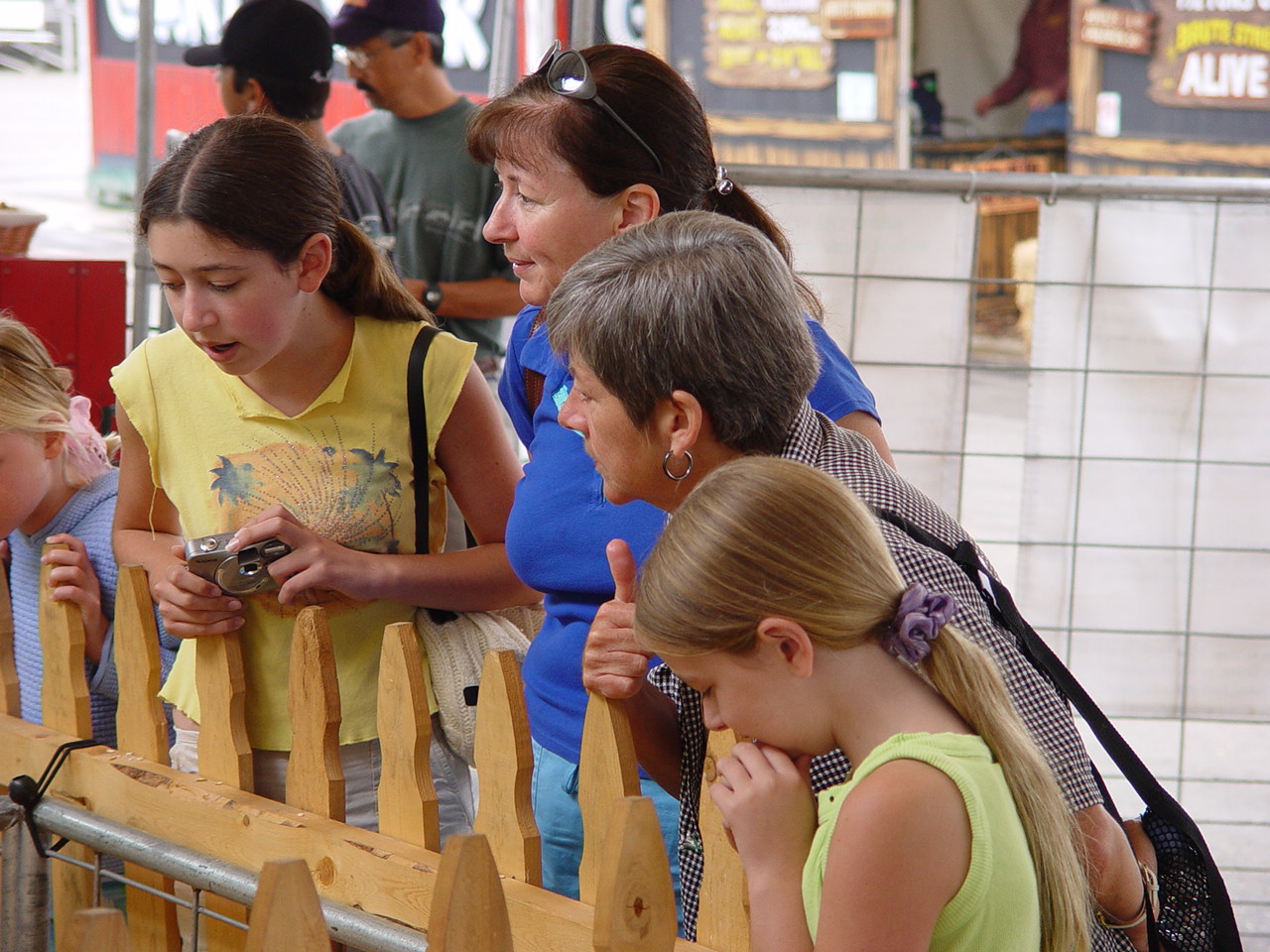
We must see the animals

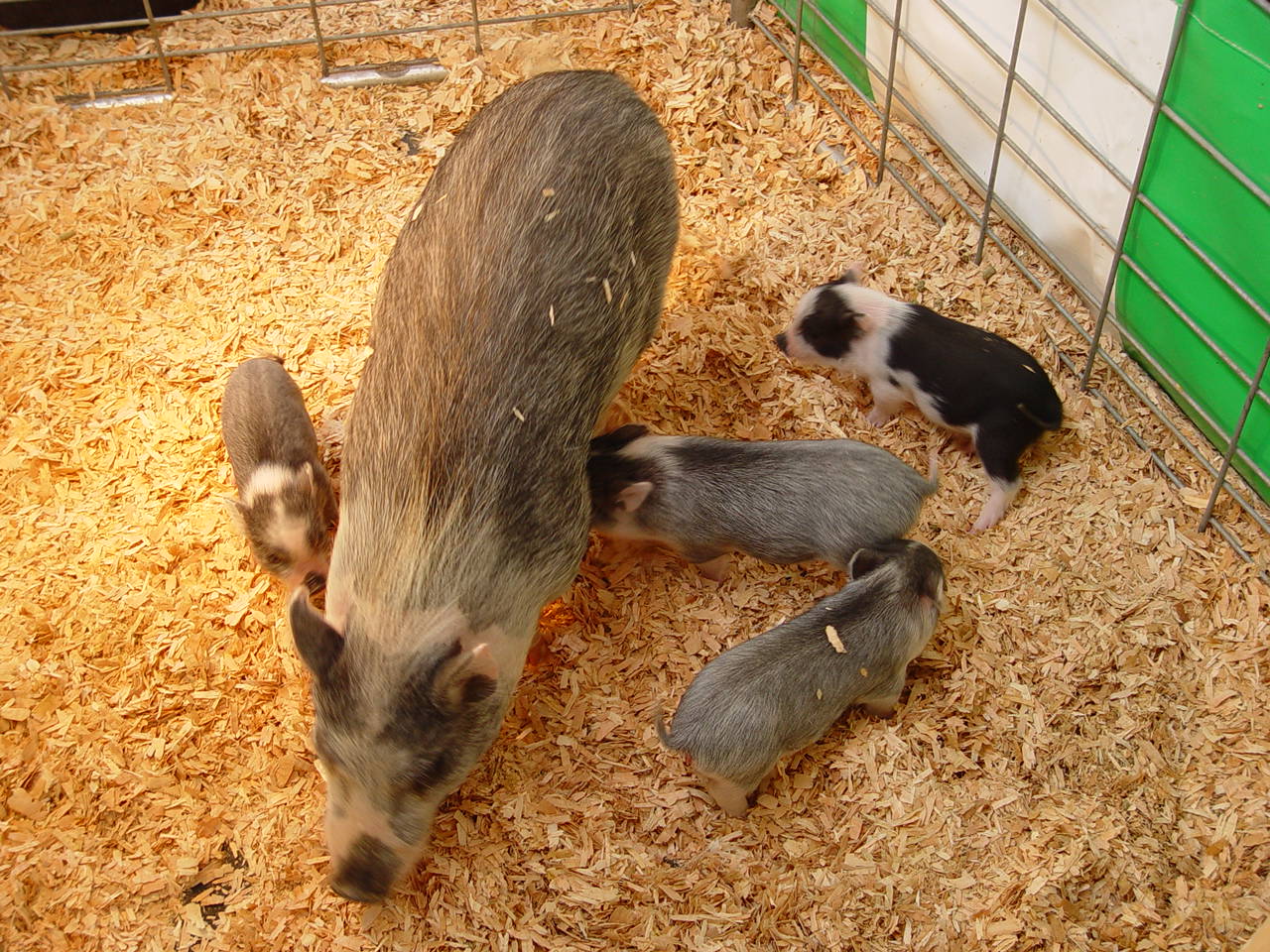
Pygmy pigs are so cute
Did You Know? - Considerably smaller than standard American or European farm pigs, most adult pot-bellied pigs are about the size of a medium- or large-breed dog, though their bodies are denser at 8 to 136 kg (20 to 300 lb). There is a dispute between pig breeders and pig advocates over what the appropriate minimum weight of a healthy adult pot-bellied pig should be, with some advocates claiming that a pig under approximately 60 pounds would be severely malnourished or dangerously stunted, and some breeders claiming that it is possible to selectively breed a pig that will reach a healthy optimal weight at 20 - 30 pounds.
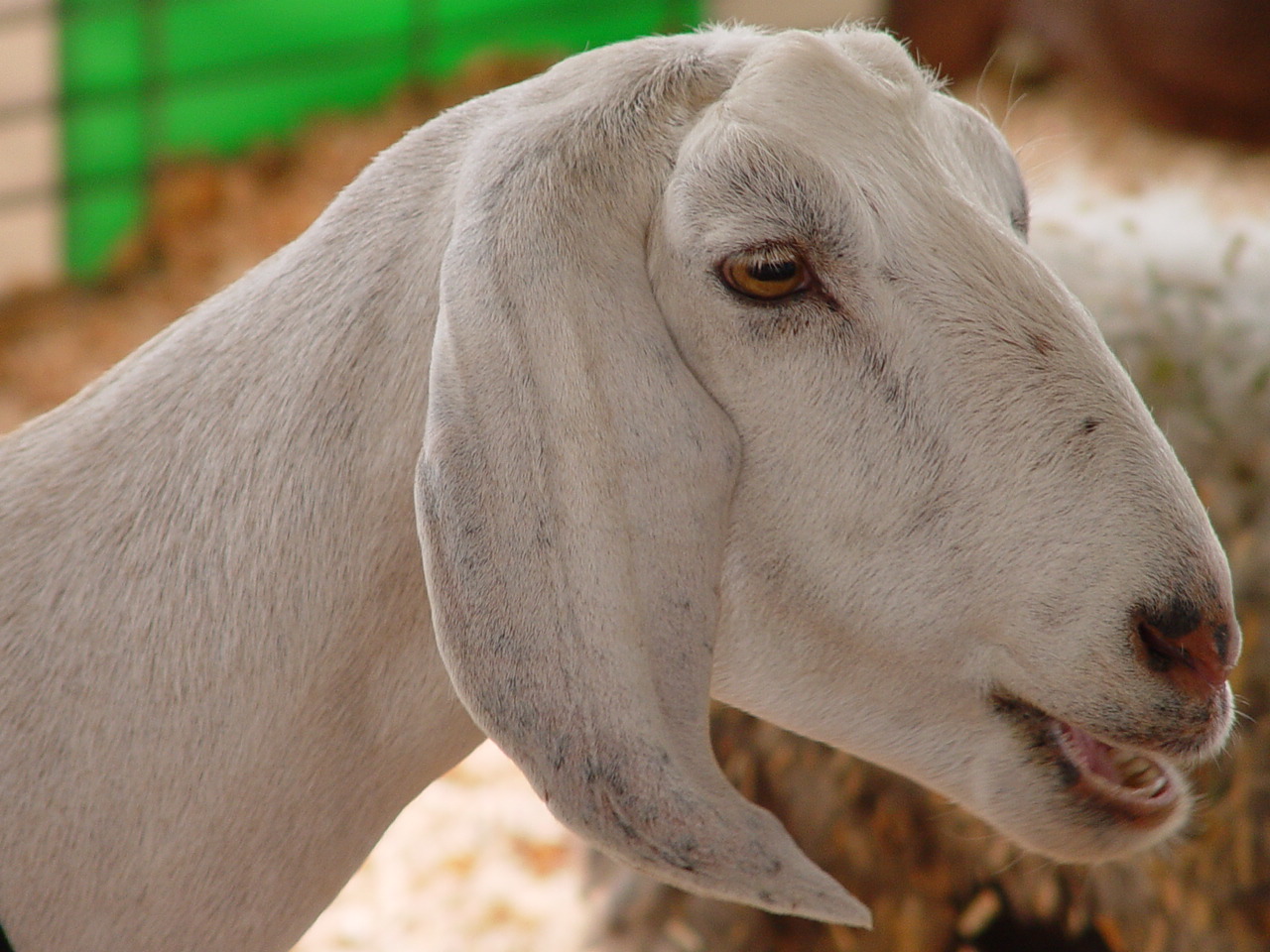
Baa baa white sheep
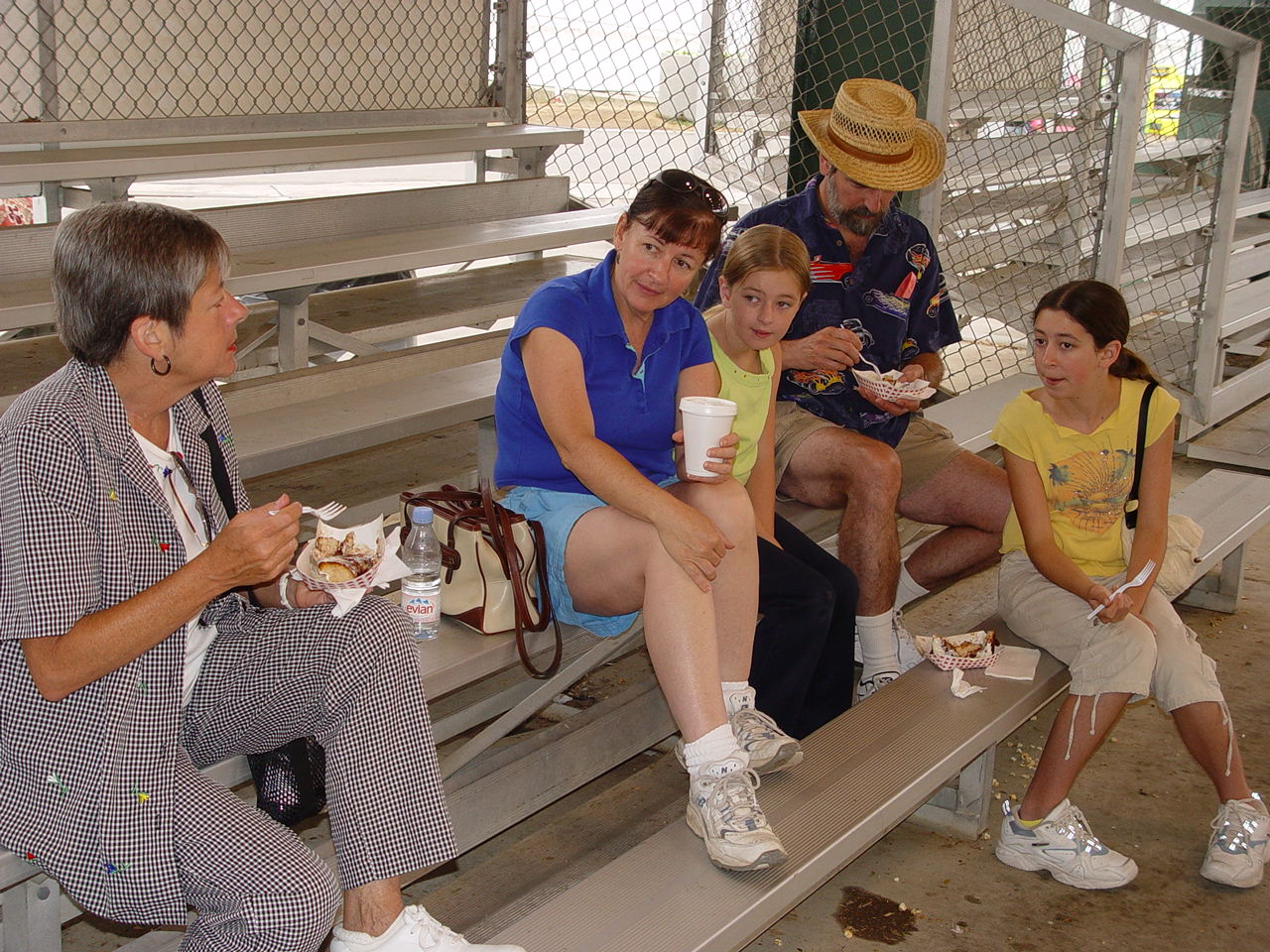
Time for a cinnamon bun

Who are these strange people....
Up Up And Away

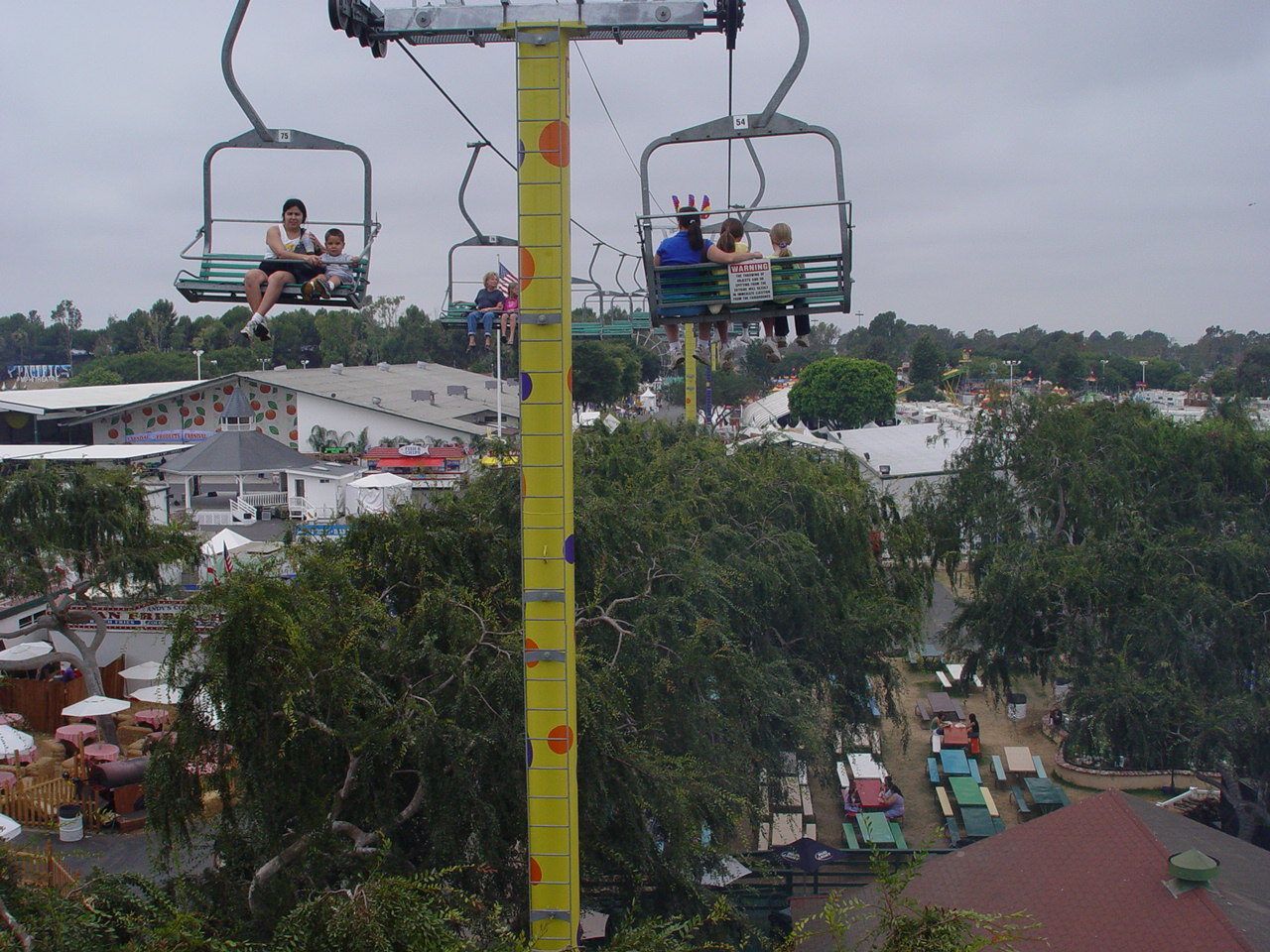
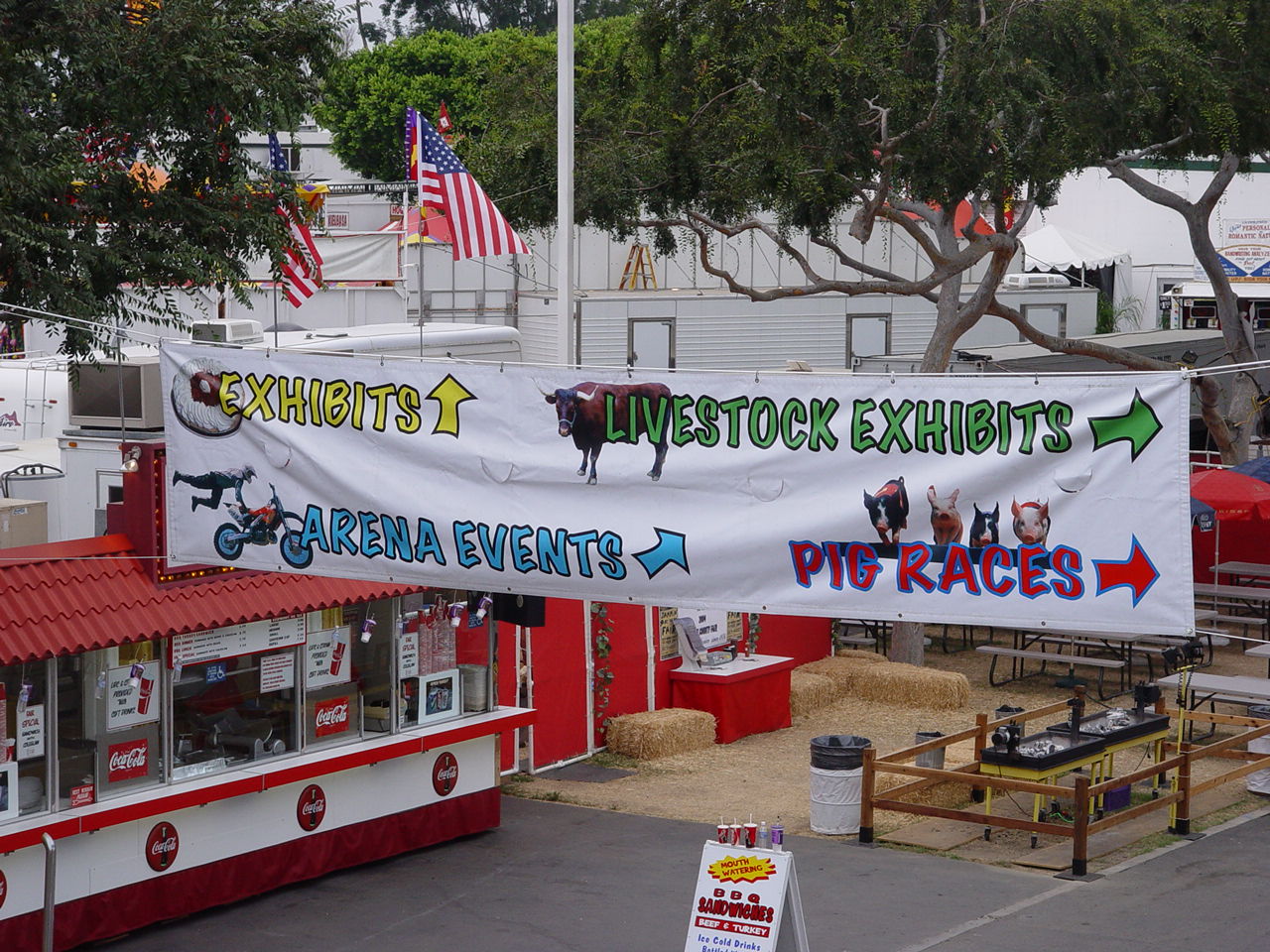
Elephants Provided The Transportation
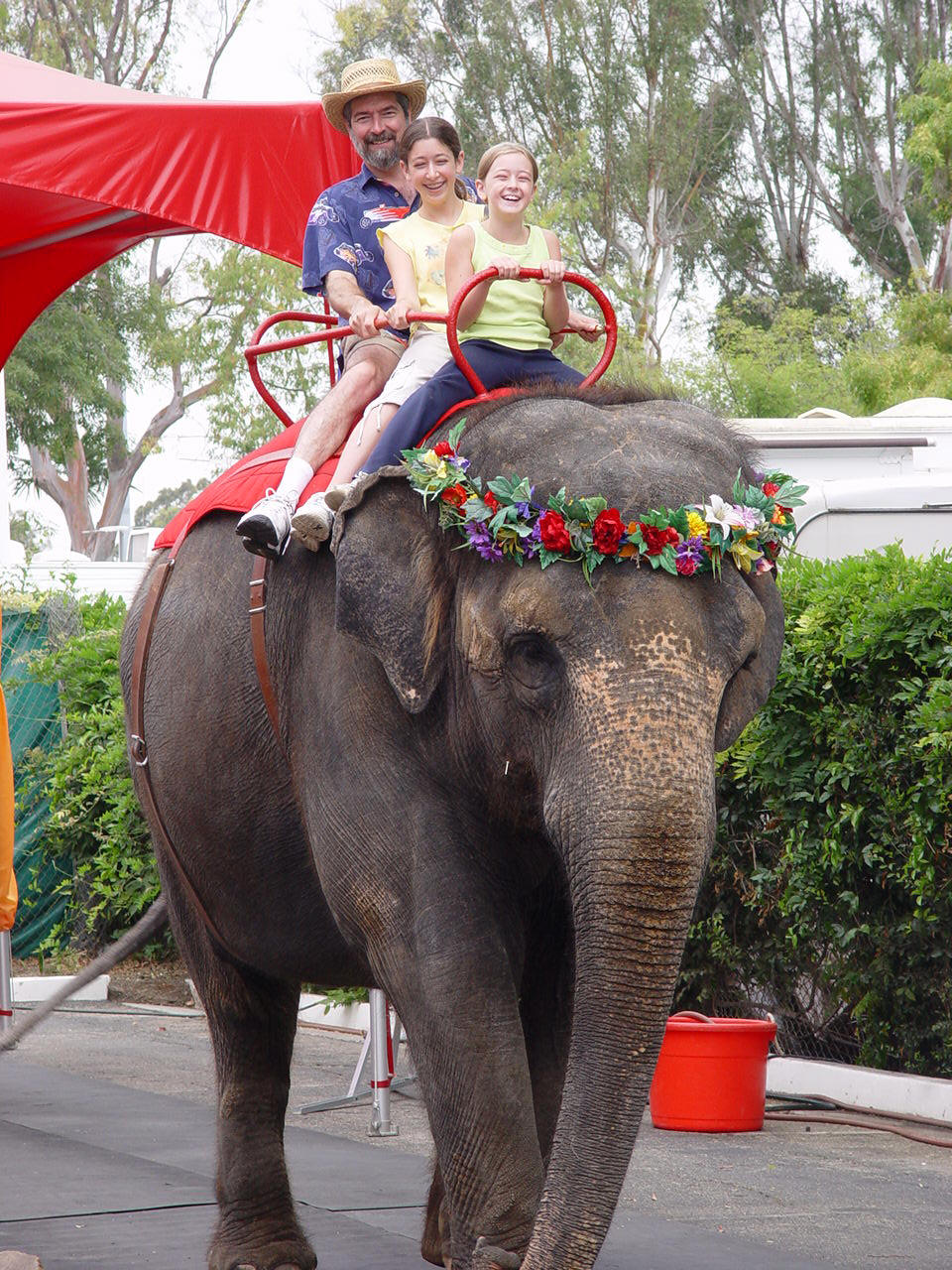
Racing around the ring
Did You Know? - At the fair they provide an amazing attraction for young and old alike. They seem to be well cared for and happy doing the track. They only work a few weeks at a time and then they rotate back to a large open area ranch.
The trainers are gentle and the elephants receive great medical care.
The elephants (Elephantidae) are a family in the order Proboscidea in the class Mammalia. They were once classified along with other thick skinned animals in a now invalid order, Pachydermata.
There are three living species: the African Bush Elephant, the African Forest Elephant (until recently known collectively as the African Elephant), and the Asian Elephant (also known as the Indian Elephant).
Other species have become extinct since the last ice age, which ended about 10,000 years ago, the Mammoth being the most well-known of these.

Love her hat....
Did You Know? - Elephants stomp when they walk.
Elephants sleep standing up.
Sometimes baby elephants lie down to sleep.
Elephants bathe. Sometimes the spray dirt on themselves to get the parasites off. Sometimes they bathe in mud
Elephants live in herds.
They cool off by fanning their ears. This cools the blood in their ears. That blood goes to the rest of their body and cools off the elephant.
They poop 80 pounds in one day.
Elephants weigh 10,000 pounds. It would take 250 students to add up to 10,000 pounds.
They collect food with their trunks.
Only grown up ladies and their babies live in the herds.
The daddy elephants leave the herd when they are 12 years old.
They fight with their tusks.
They eat grass and bark.
During the wet season they eat things low to the ground.
During the dry season they use their trunk to gather food from trees and bushes.
They suck up water into their trunks and shoot it into their mouths.
Elephants need lots of room to roam and eat. (Some of us think that this must mean they are not happy in the zoo or in the circus.)
They can run 24mph for short distances.
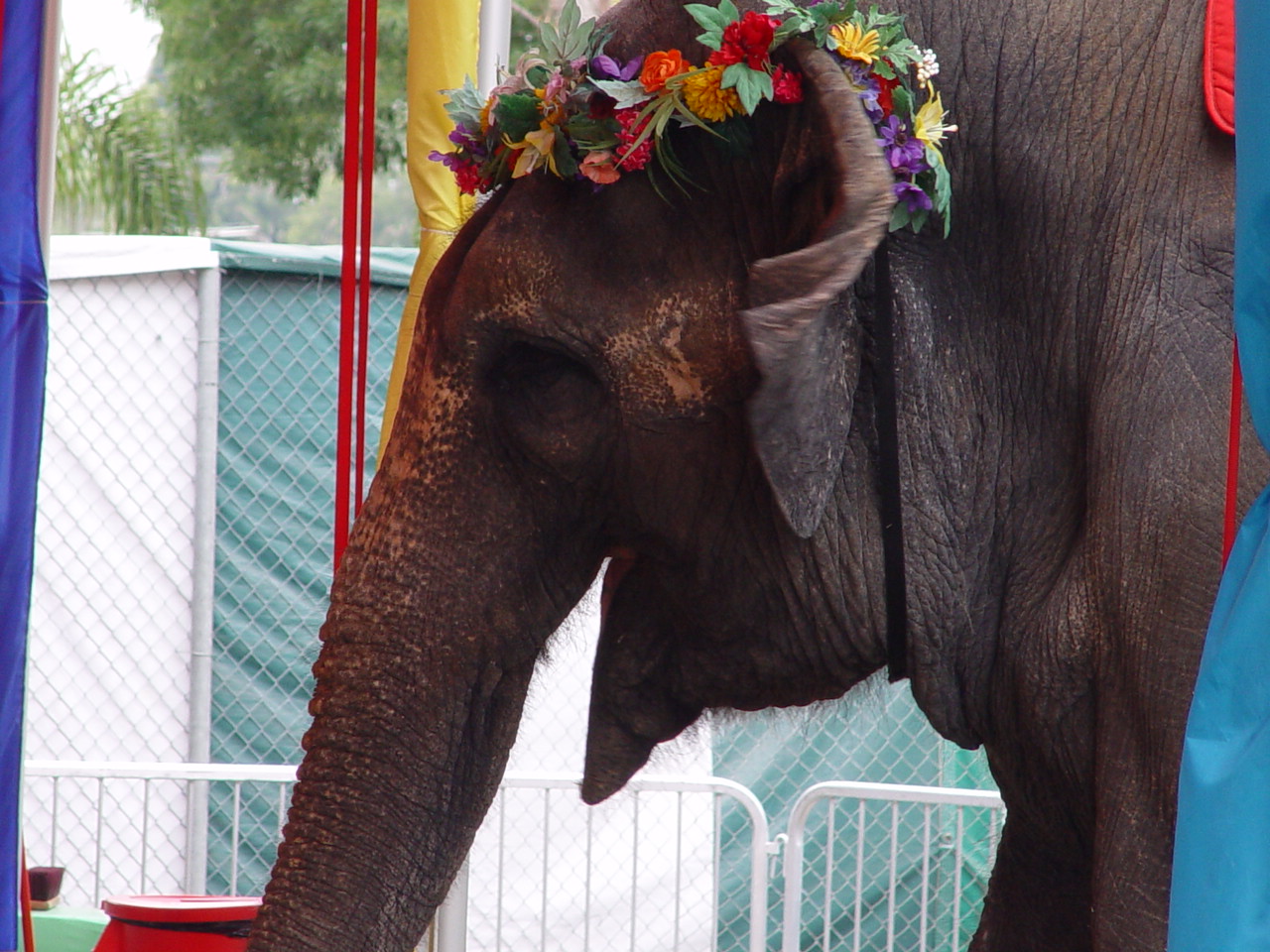
Smile for the camera
Did You Know? - The elephant is the largest animal that lives on land. Some male elephants can grow to be thirteen feet tall. That's more than twice as tall as many human adults. Elephants can weigh as much as a school bus—between ten and fourteen thousand pounds! Elephants smell, drink, eat, and wash themselves with their long trunks. They have tusks—long teeth made of ivory—that help them get food and carry heavy objects.
The most obvious characteristic of elephants, besides their massive size, is their trunk. The trunk is nothing more than an elongation of their nose and upper lip. Besides being used for breathing and smelling it is also used as an appendage, much like an arm or hand. Elephants are capable of pulling up to 11.5 liters (3 gallons) of water into the trunk to be sprayed into the mouth for drinking or onto the back for bathing. They also use two fingerlike projections that are at the tip to manipulate small objects and to pluck grasses.
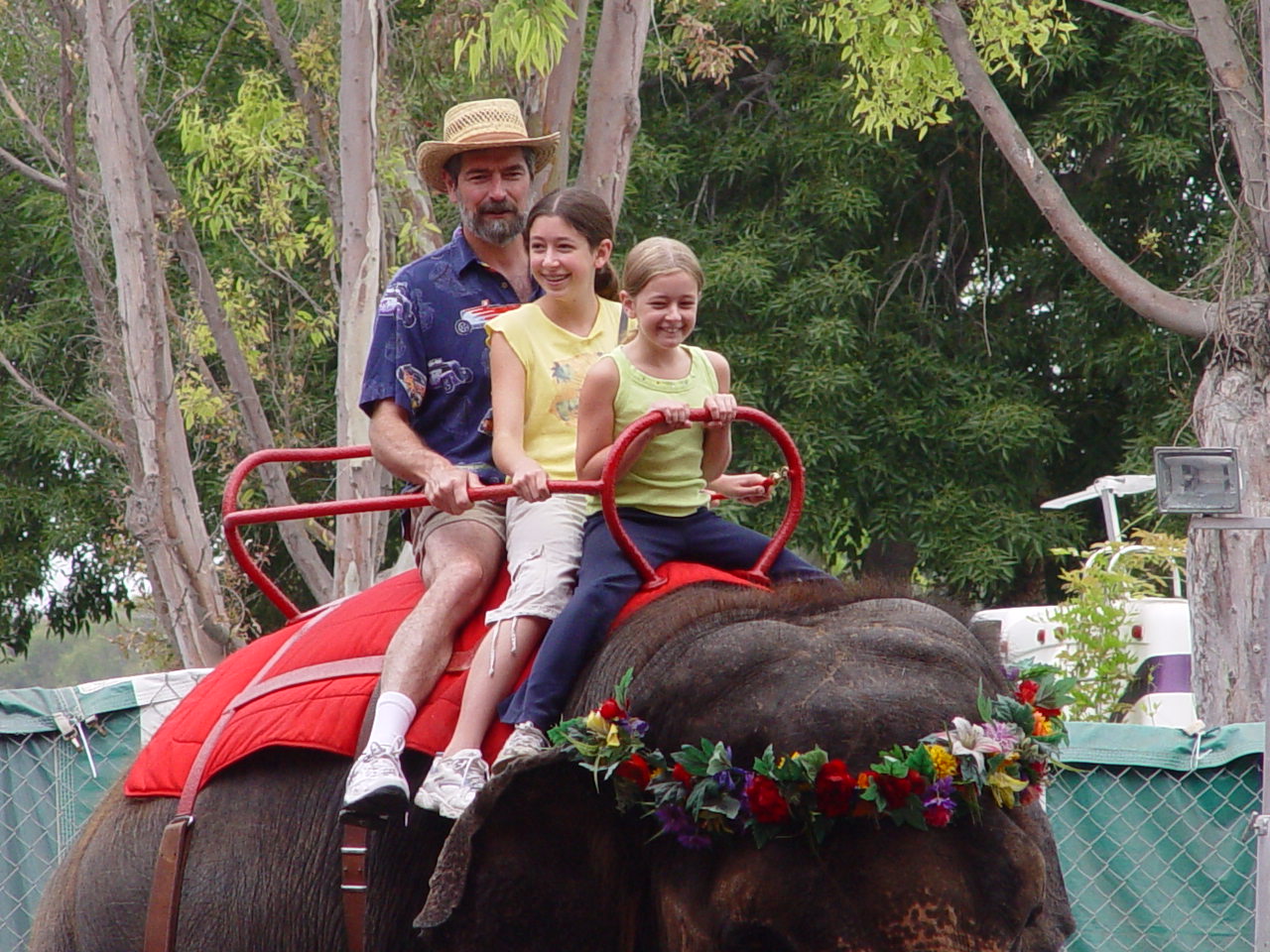
Yo great beast... Onward and upward!
Who Like The Little Animals?
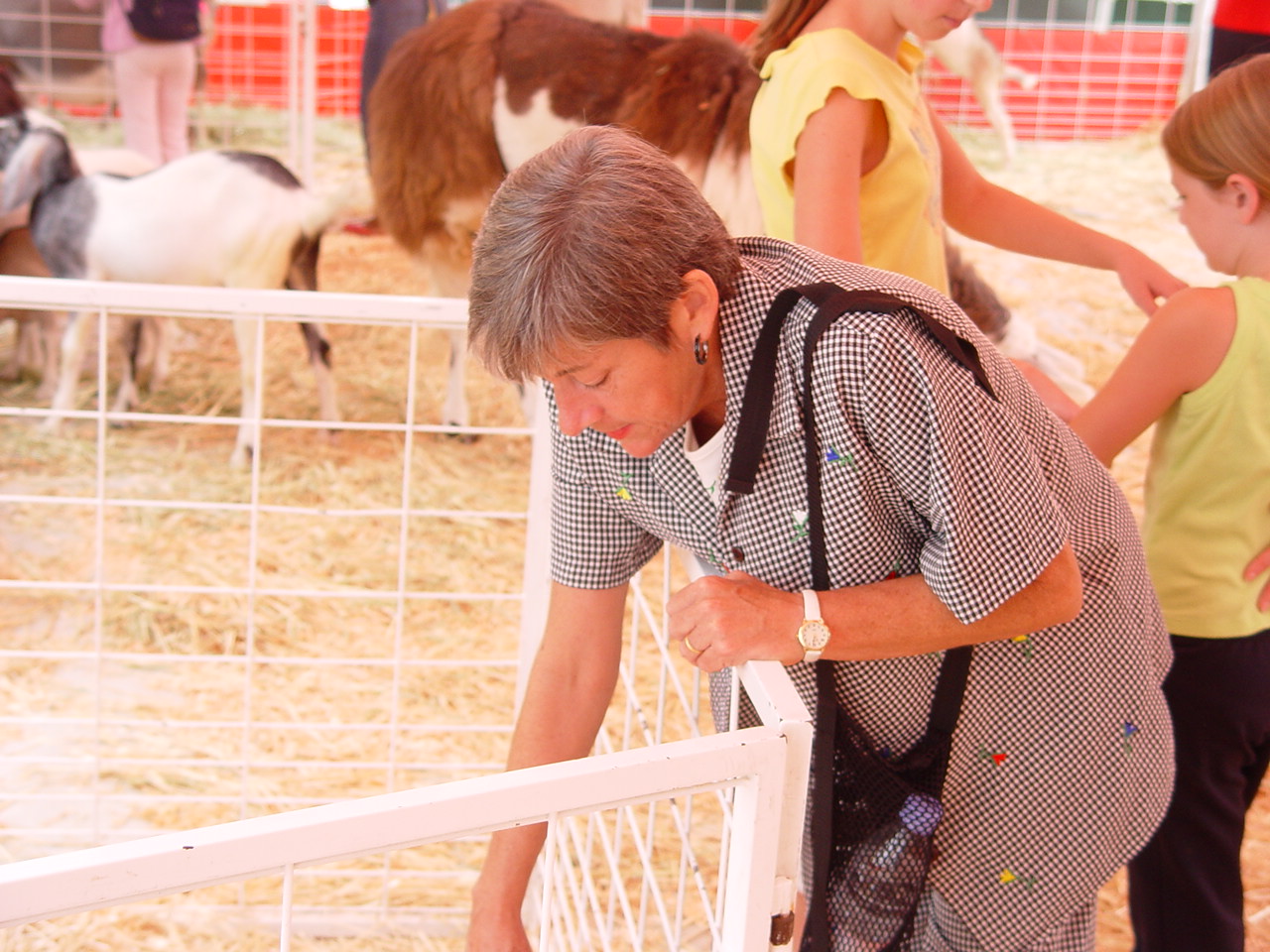

"We need a kangaroo around the house, right?"
Did You Know? -
- Kangaroos are native to Australia where most marsupials live and there are over 40 species of kangaroo.
- Kangaroos are divided into red and grey species. Red kangaroos thrive in the desert regions of the continent; grey kangaroos range in the grassy areas of Eastern and Western Australia.
- Male kangaroos are called bucks, female kangaroos are called does and young kangaroos are joeys.
- Kangaroos are famous for their strong hind legs on which they hop from place to place.
- The kangaroo’s long tail helps the animal maintain balance while hopping.
- Kangaroos are herbivores – grass eaters.
- Humans and Australian wild dogs-dingoes-are the kangaroos’ main predators.
- Kangaroos are notorious kickers when it comes to defending themselves.
- Kangaroos when challenging the alpha male will fight nasty, kicking and boxing. Younger male roos when learning to play will often practise boxing with each other.
- A group of kangaroos is called a mob.
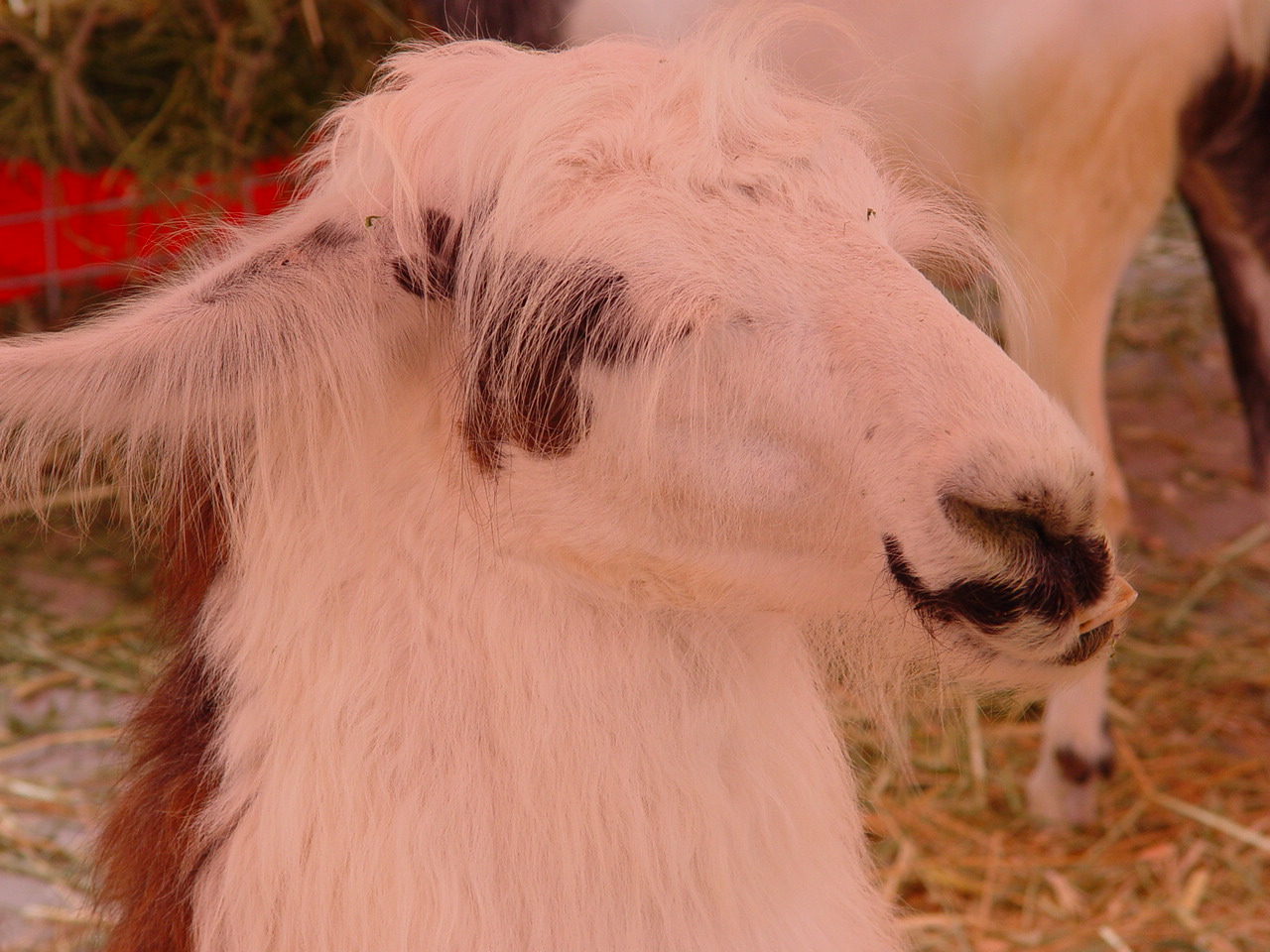
"Like my hair doo?"
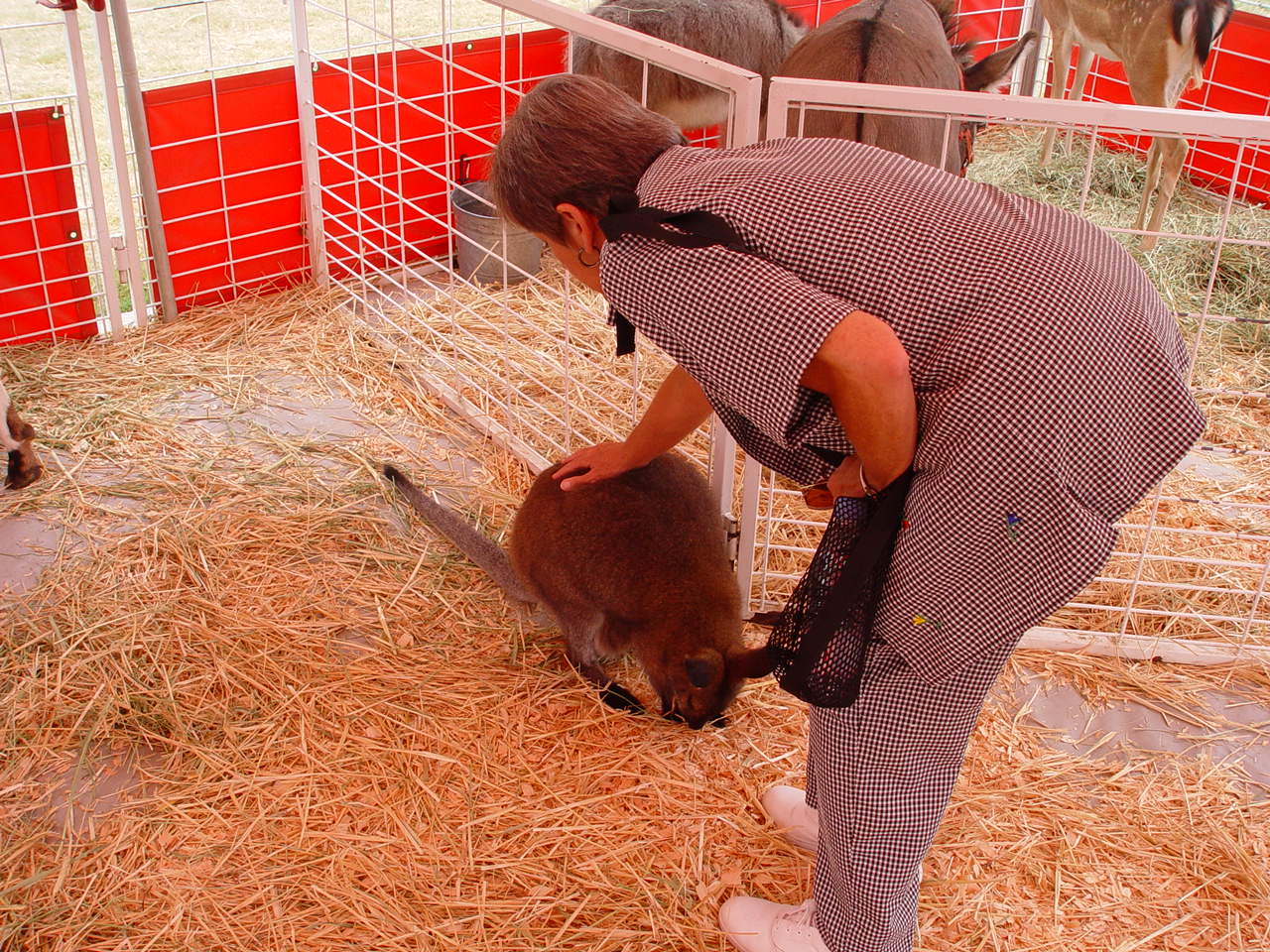
Please do NOT eat my purse

Looks like a giant poodle
Did You Know? -
• Llamas are members of the camelid family, and so are related to camels, alpacas, vicunas, and guanacos.
• Llamas are very quiet animals. They communicate primarily with body language, and soft humming sounds.
• Male llamas make a ‘clucking’ noise when they think a female is nearby, and a louder ‘alarm call’ to alert the herd when they feel threatened.
• The llama’s large eyes can look in different directions independently from one another, and can see far distances- they are always watching for predators.
• Llamas only have teeth on the bottom in the front, the top is just a rubbery pallet. This makes it very safe when feeding a llama treats as they tend to take them with their soft lips!
• The soft padded foot of the llama makes them environmentally friendly and excellent companions for packing and day hikes.
• Although there are saddles available for children to ride llamas, they do not have a spine like a horse that can support the weight of most adults.
• All camelids do ‘spit’ as a means of defence, and to show dominance within the herd.
• They are ‘communal poopers’- they all tend to eliminate in the same location, which is very helpful when walking in the pasture!
Carnival Means Rides, Correct?
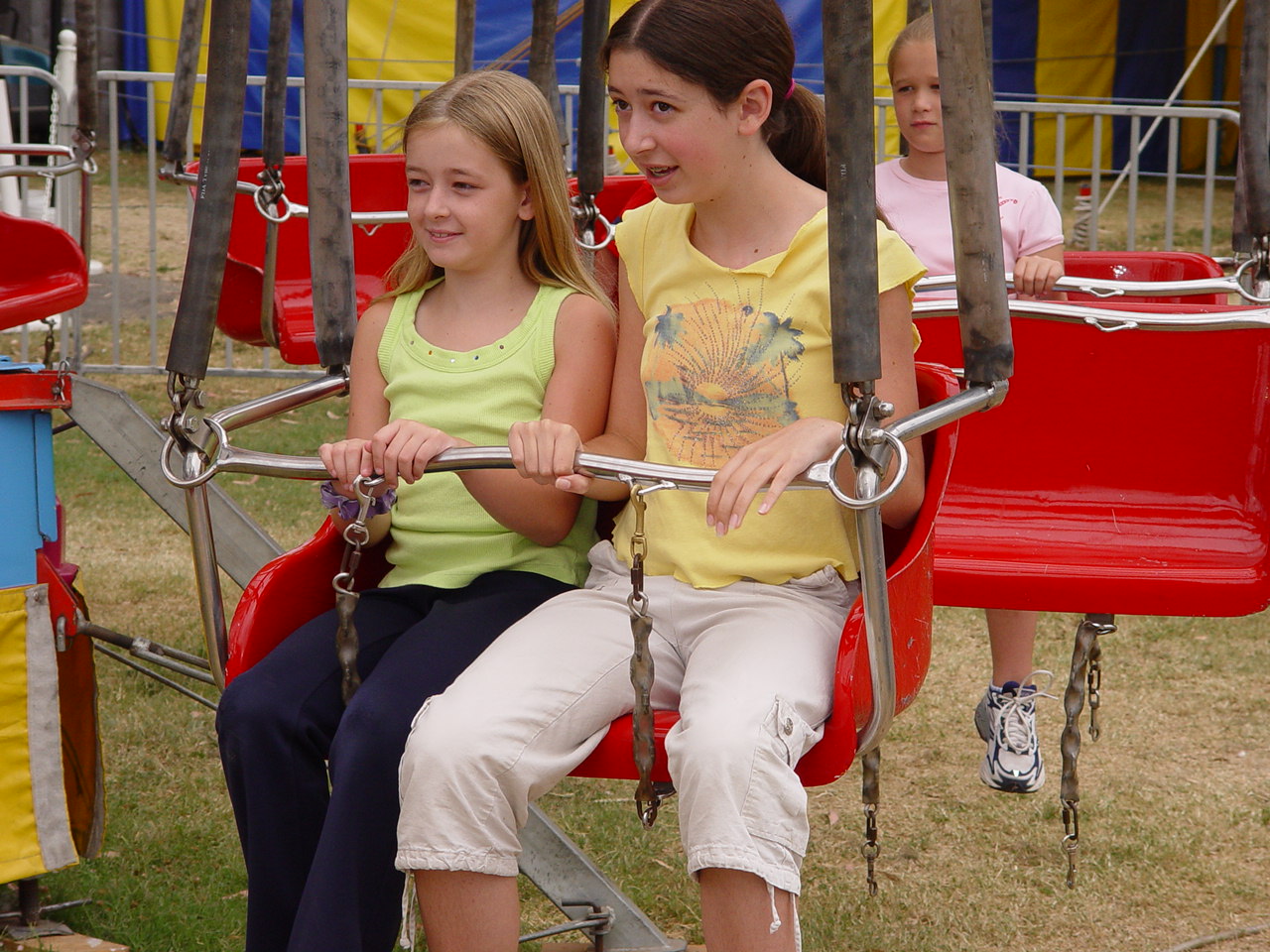
Hannah does not look too sure about this
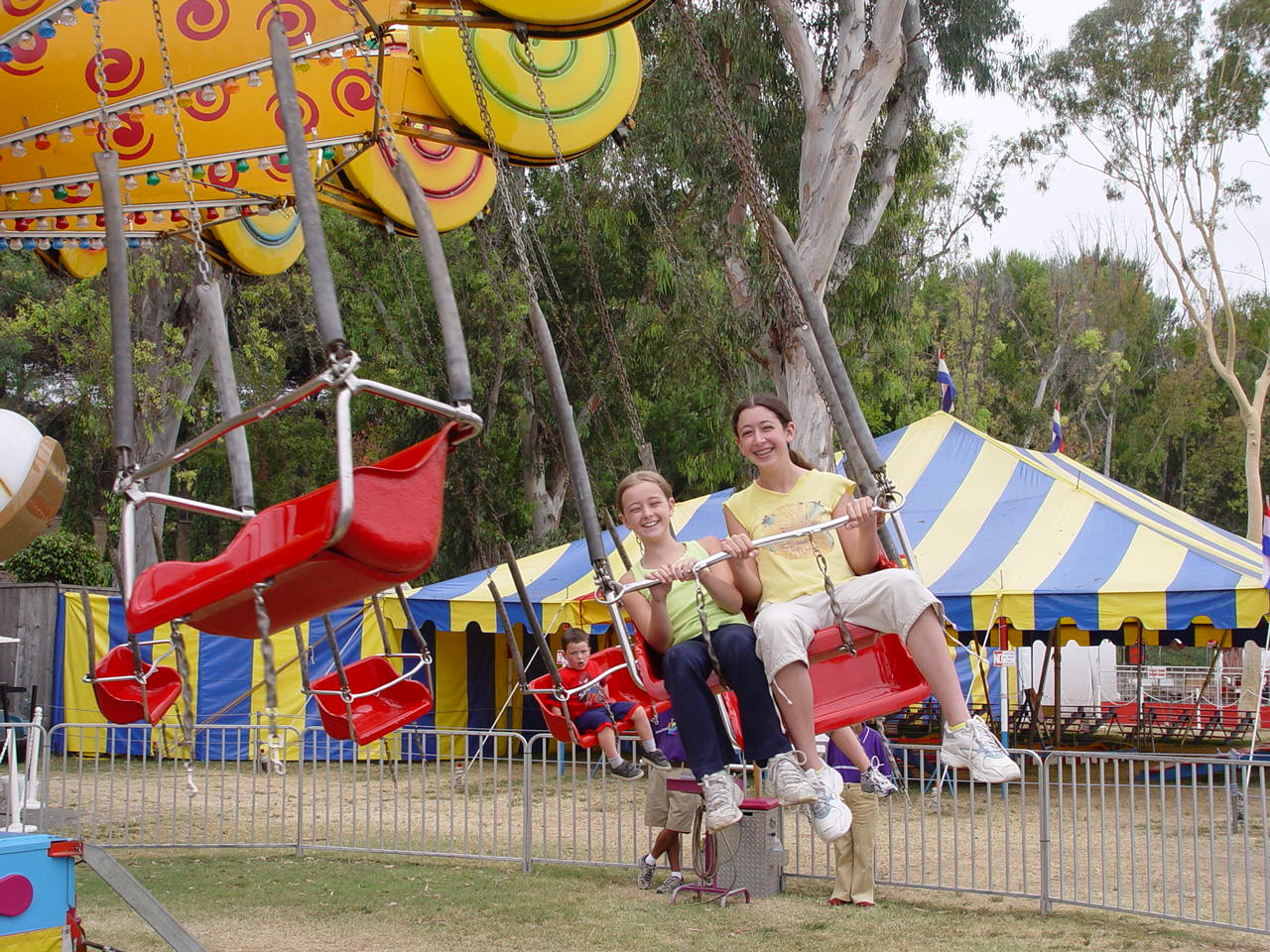
Here we go....
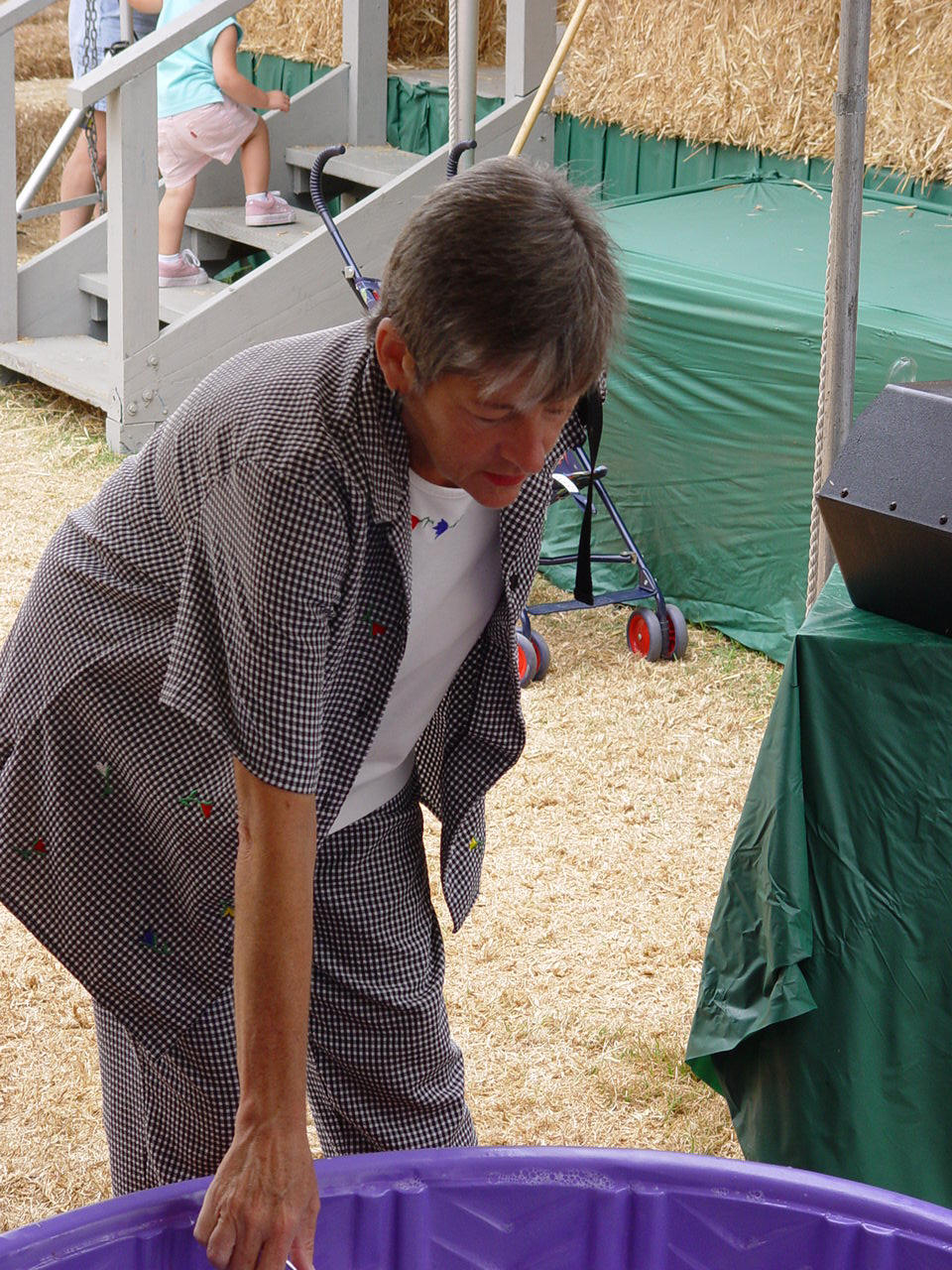
Time for making bubbles

Now that is a bubble
Did You Know? - A soap bubble is a thin film of soapy water enclosing air that forms a hollow sphere with an iridescent surface. Soap bubbles usually last for only a few seconds before bursting, either on their own or on contact with another object. They are often used for children's enjoyment, but they are also used in artistic performances. Assembling several bubbles results in a foam.
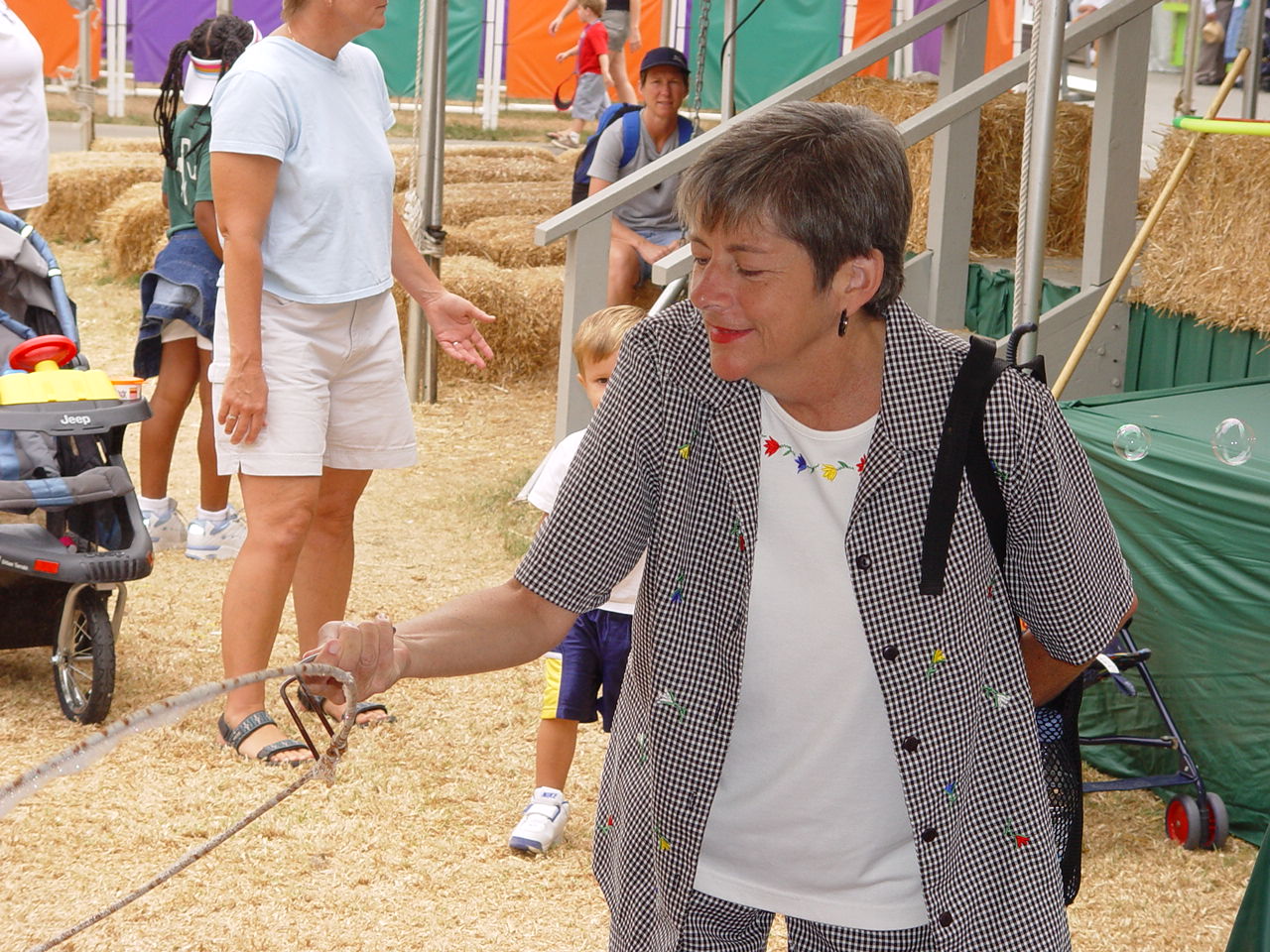
Hey... This is easy

Go get'um Lisa
Time For The Piggies

Z-z-z-z-z-z-z-z-z

The dinner bell has apparently rung
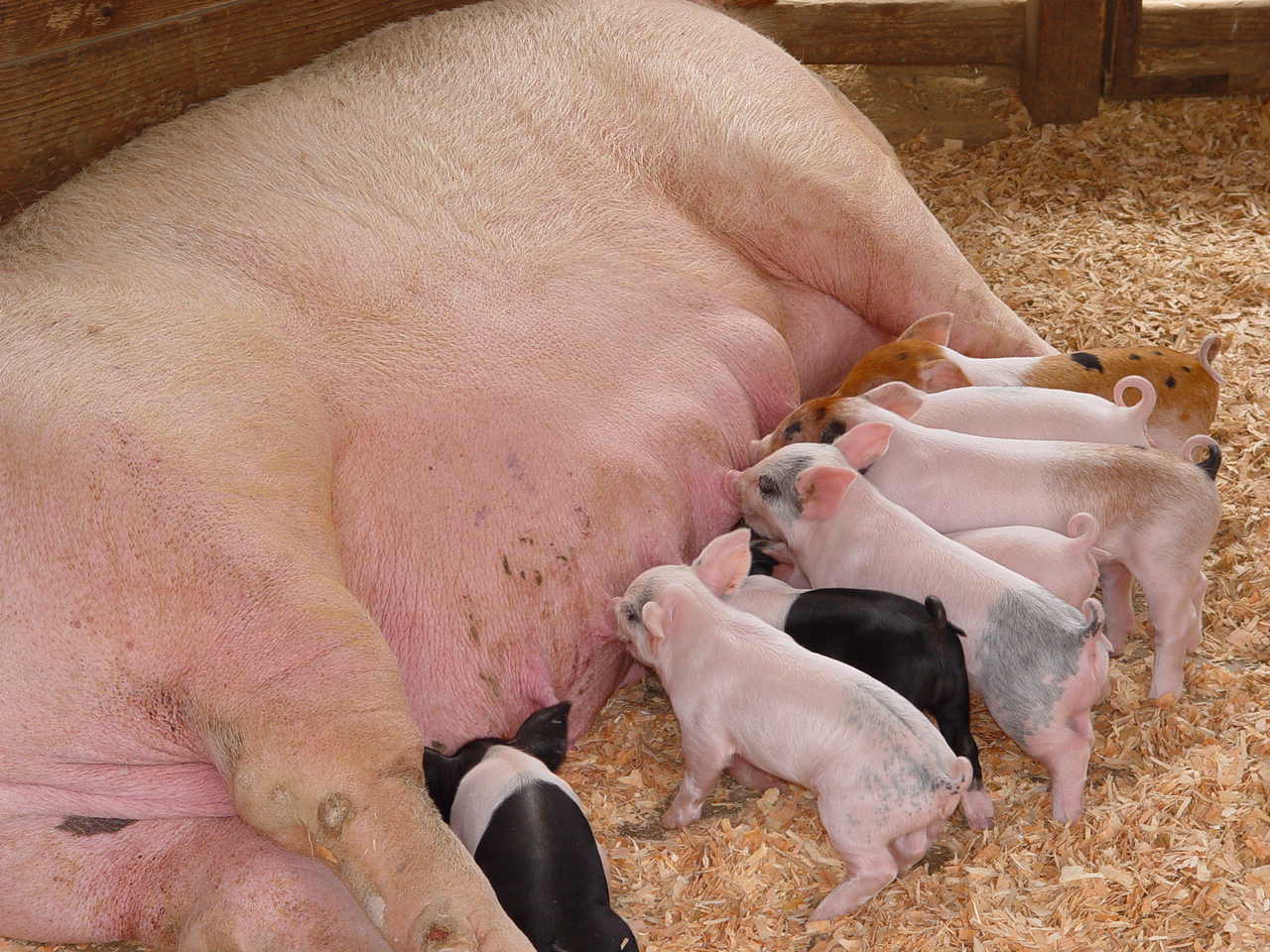
Latched on...

Lined right up.... Mommy can relax

M-m-m-m
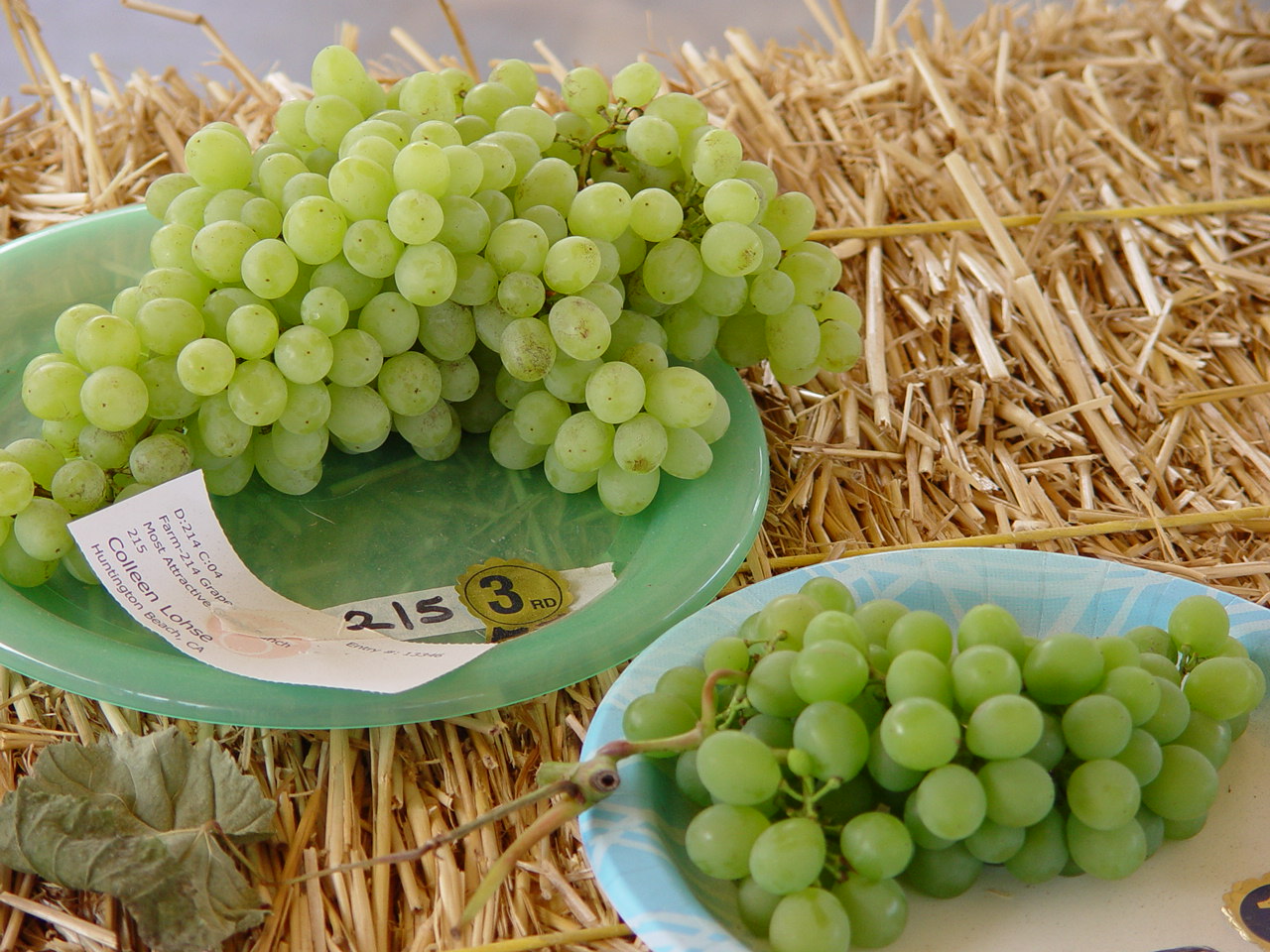
Eat your fruits and veggies

Think wine
Did You Know? - The cultivation of the domesticated grape began 6,000–8,000 years ago in the Near East. The earliest archeological evidence for a dominant position of wine-making in human culture dates from 8,000 years ago in Georgia.
Yeast, one of the earliest domesticated microorganisms, occurs naturally on the skins of grapes, leading to the innovation of alcoholic drinks such as wine. The earliest known production occurred around 8,000 years ago on the territory of Georgia (country).
During an extensive gene-mapping project, archaeologists analyzed the heritage of more than 110 modern grape cultivars, and narrowed their origin to a region in Georgia (country), where wine residues were also discovered on the inner surfaces of 8,000-year-old ceramic storage jars.

Look out below... Here comes Pat

Lisa flies off the slide at the bottom

Hang on sis... I'll catch up with you!
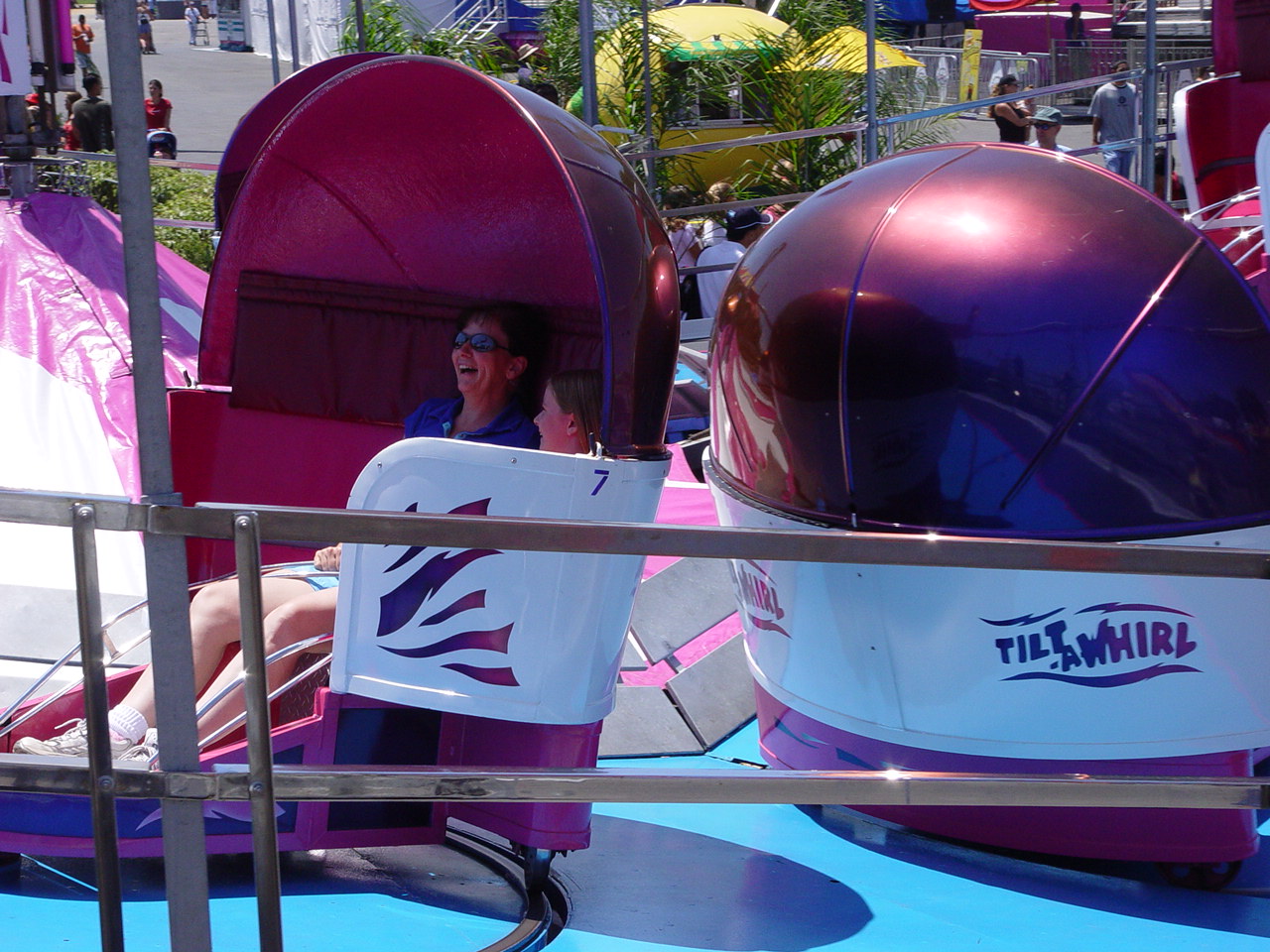
Diane and Lisa do the Tilt-A-Whirl
Did You Know? - Herbert Sellner, a woodworker and maker of water slides, invented the Tilt-A-Whirl in 1926, at his Faribault, Minnesota, home. Over the next year, the first 14 Tilt-A-Whirls were built in Herbert's basement and yard. In 1927, Sellner Manufacturing opened its factory in Faribault, and the ride debuted that year at the Minnesota State Fair.
Family legend states that Herbert experimented with a chair placed on the kitchen table. Herbert's son Art sat in the chair, and Herbert rocked the table back and forth.
The earliest Tilt-A-Whirls were constructed of wood, powered by a gas motor, and featured nine cars. Today, the ride is constructed of steel, aluminum and fiberglass, is powered by seven small electric motors, and features seven cars.

Around and around we go
Did You Know? - A new Tilt-A-Whirl costs approximately USD $300,000 to purchase. The oldest currently operating Tilt-A-Whirl is a 1927 model, still traveling with Tom Evans United Shows in the midwest.
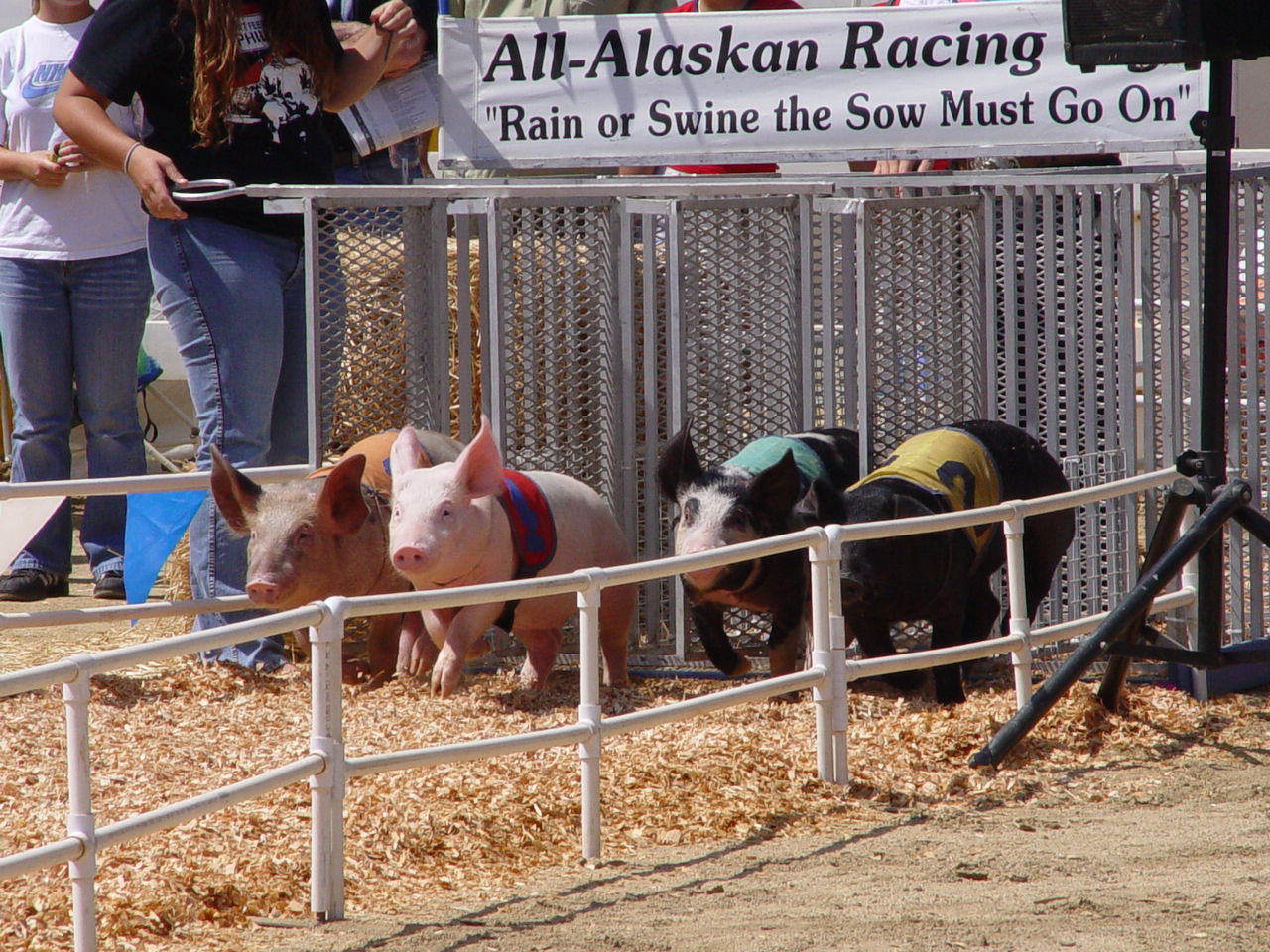
Off they go in a cloud of dust
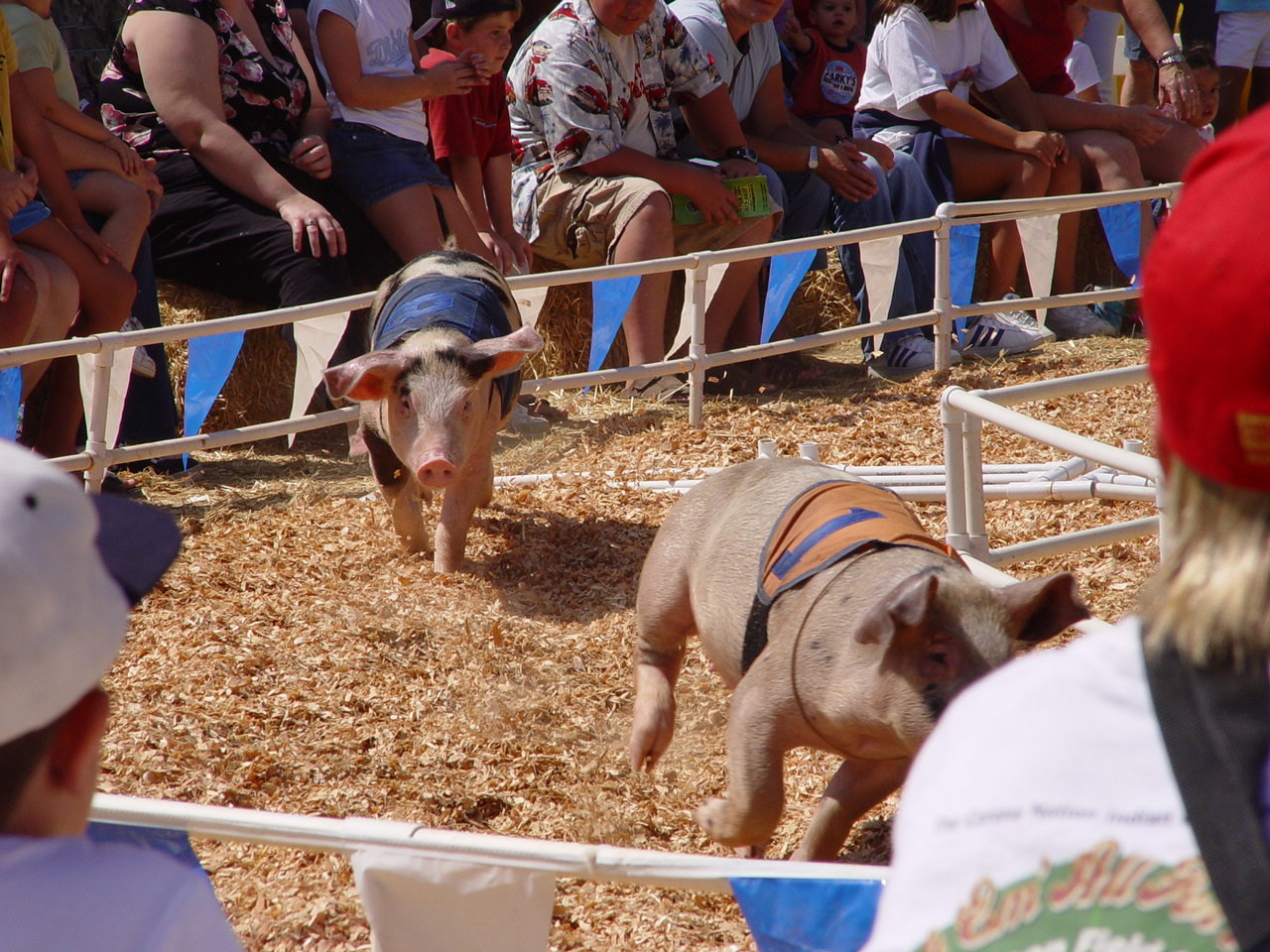
Around the turn
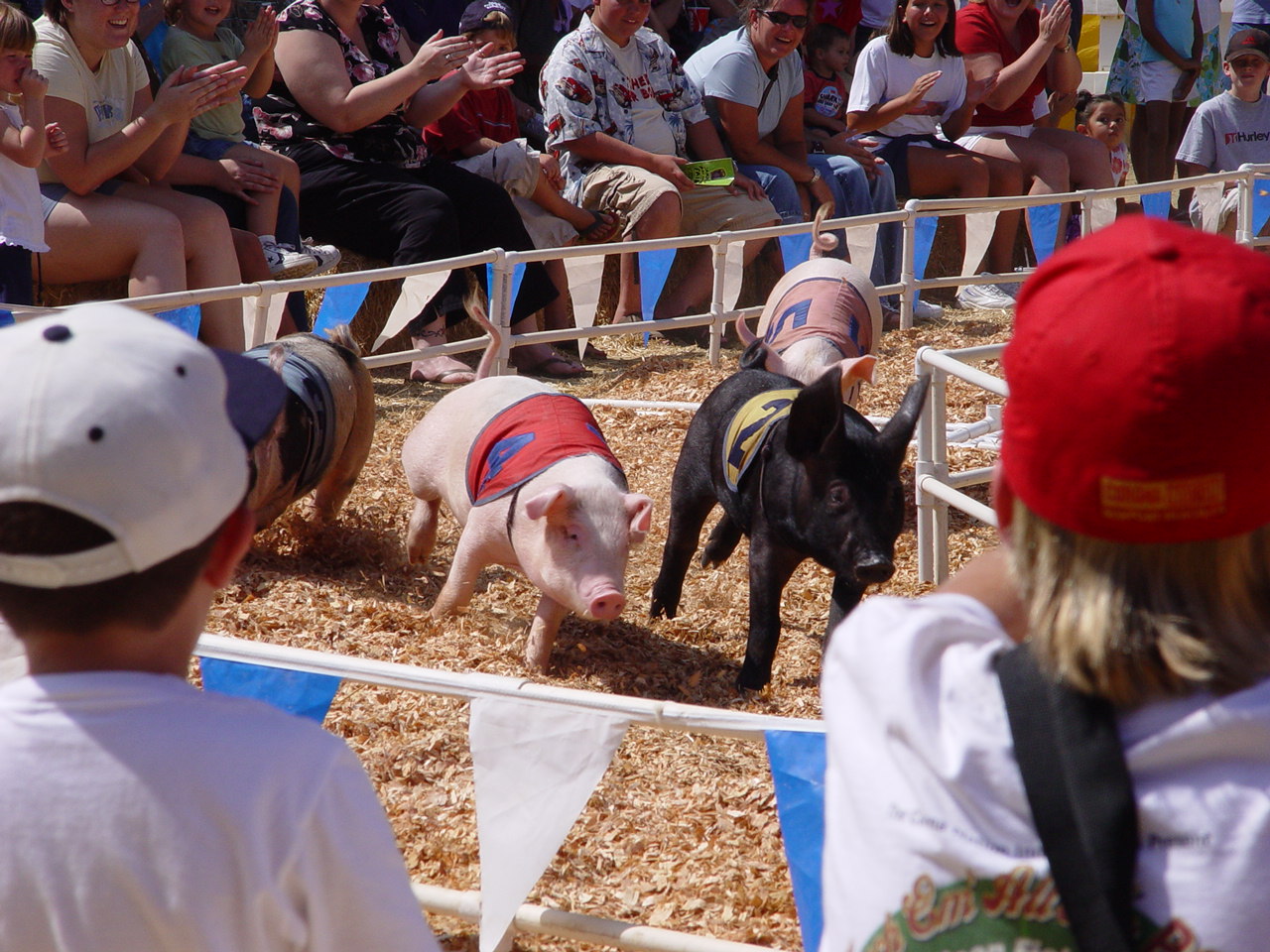
35 miles per hour.... Sort of!
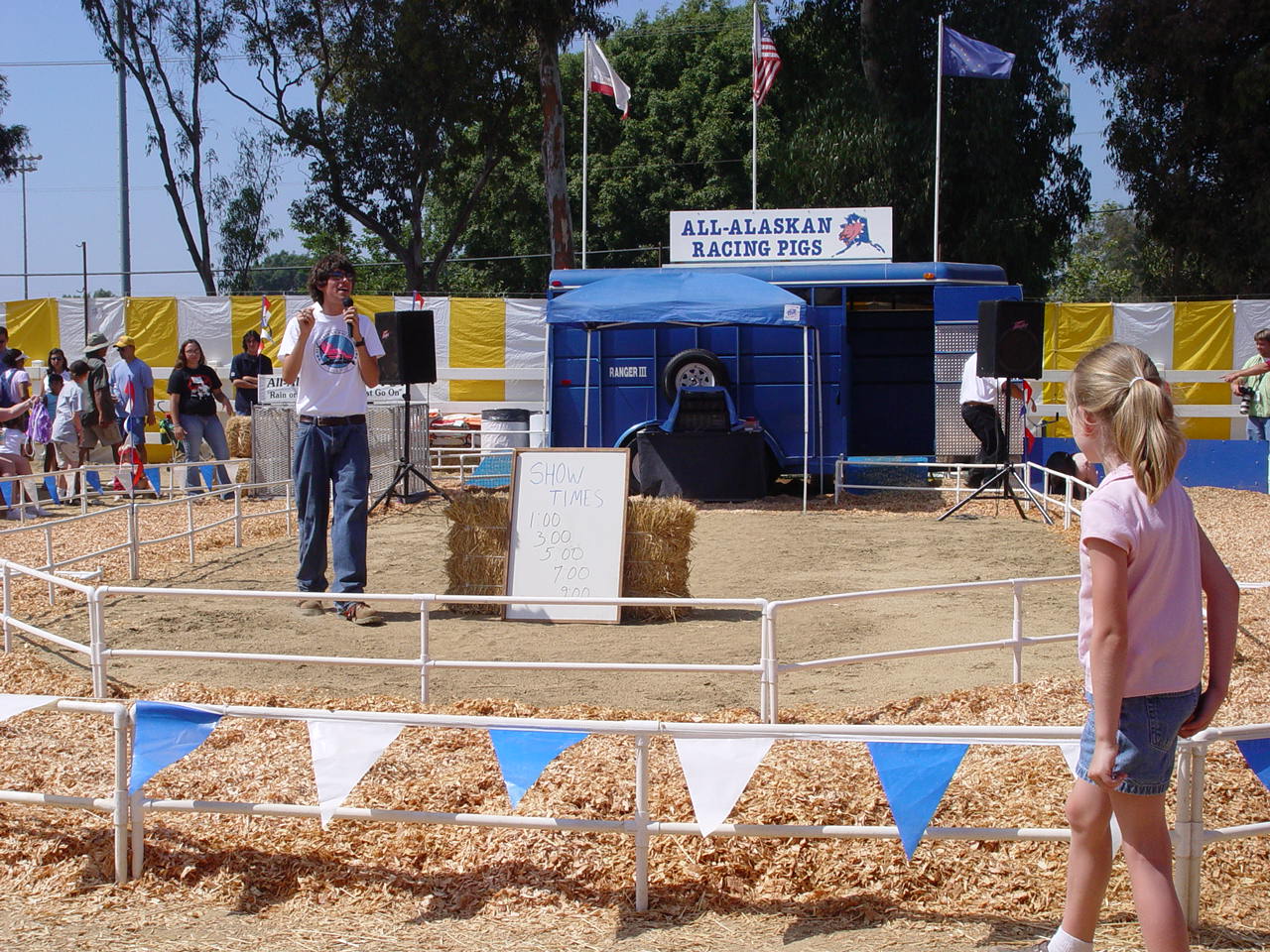
The track is being prepared for the next race
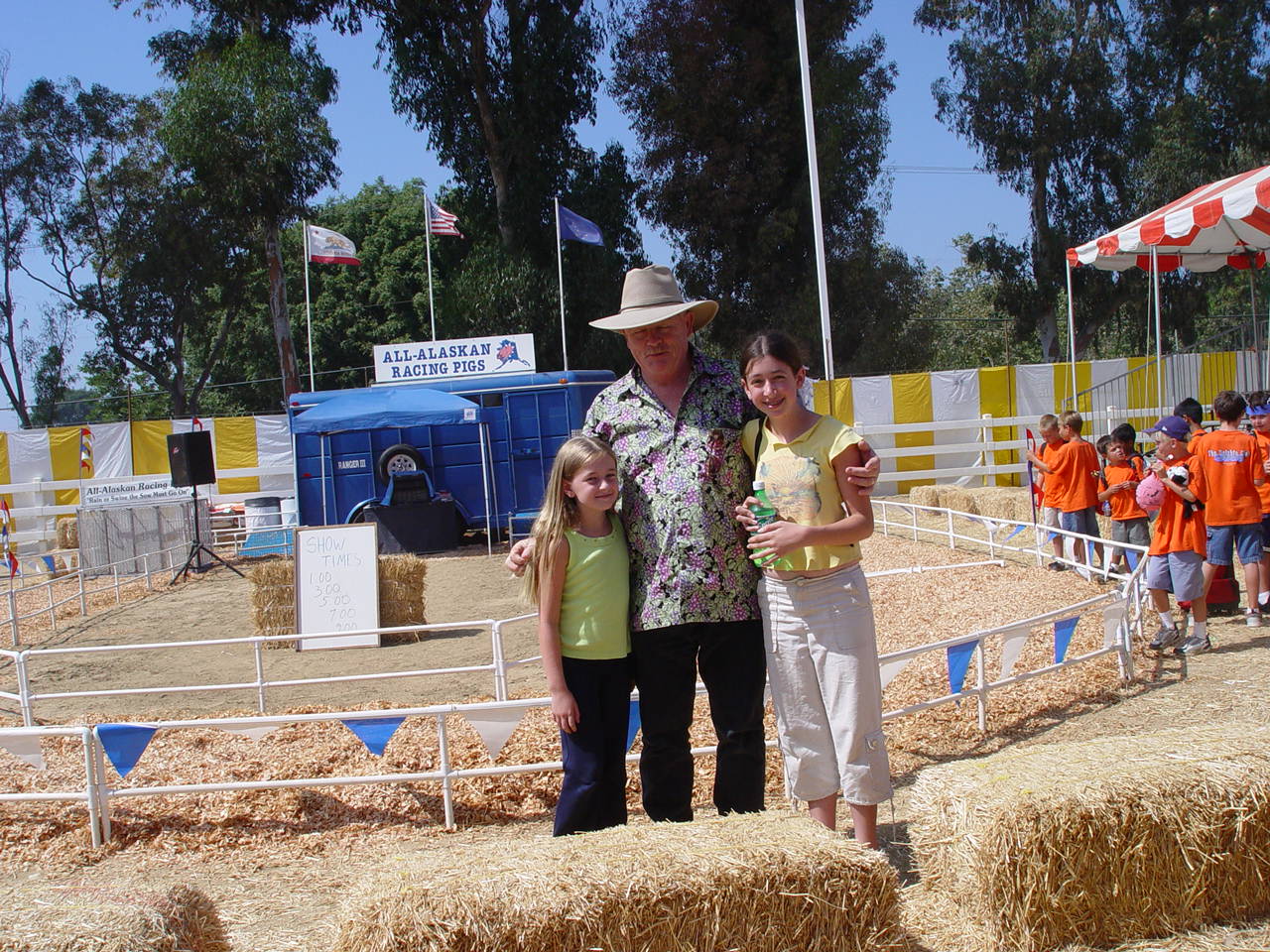
Lisa, Paul, and Hannah! A force to be dealt with
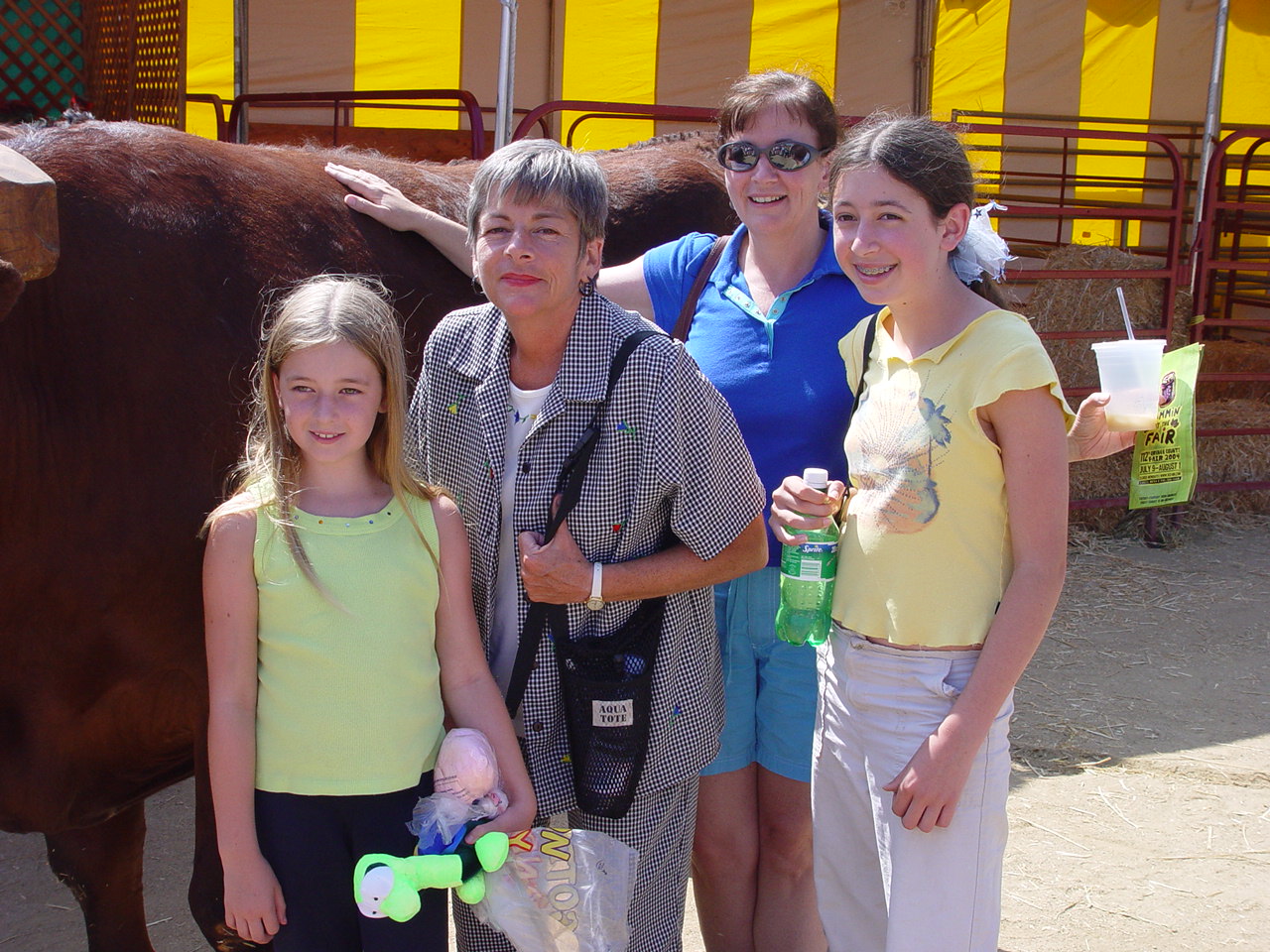
Water buffalo
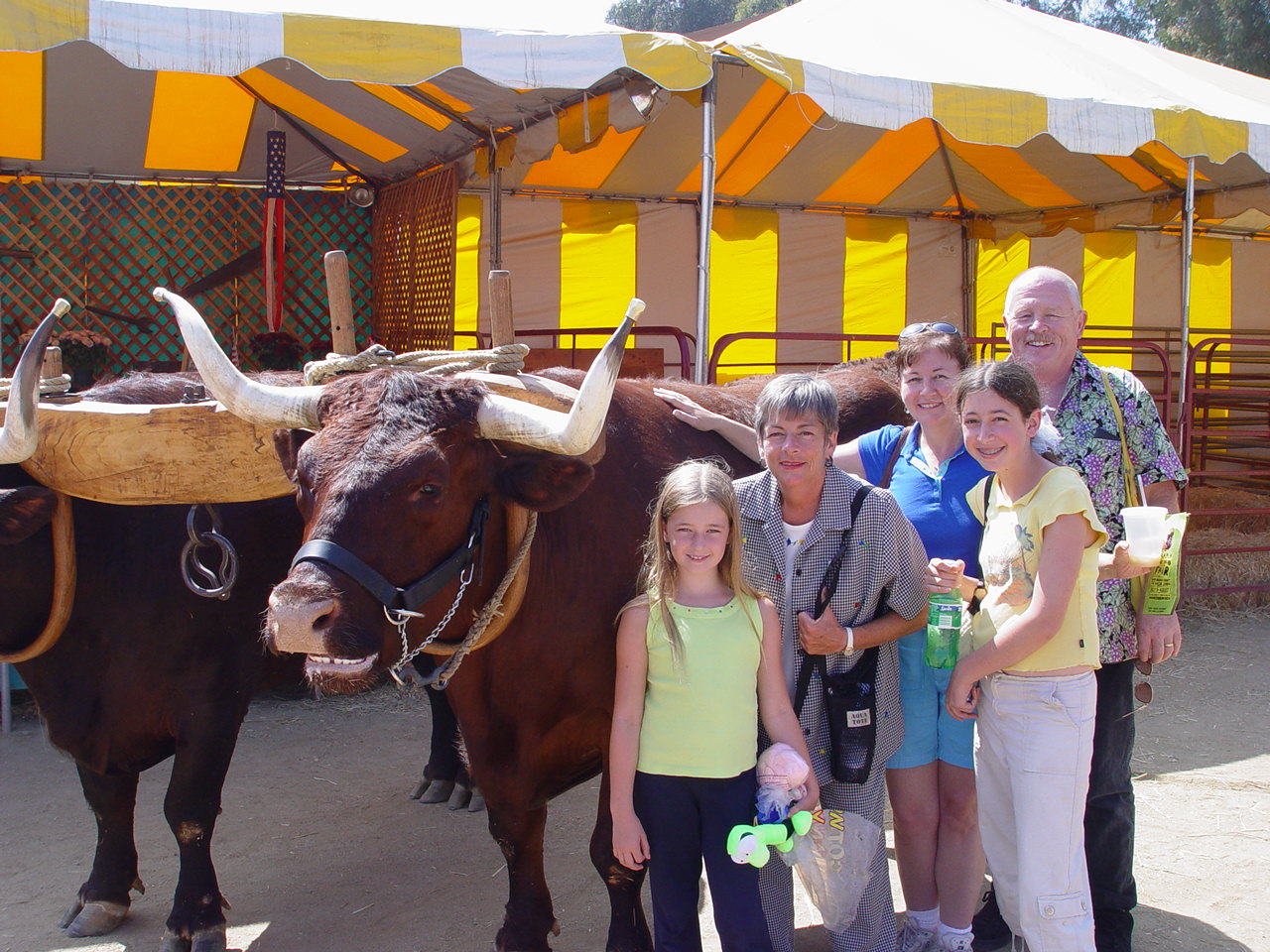
Smile... Your on camera
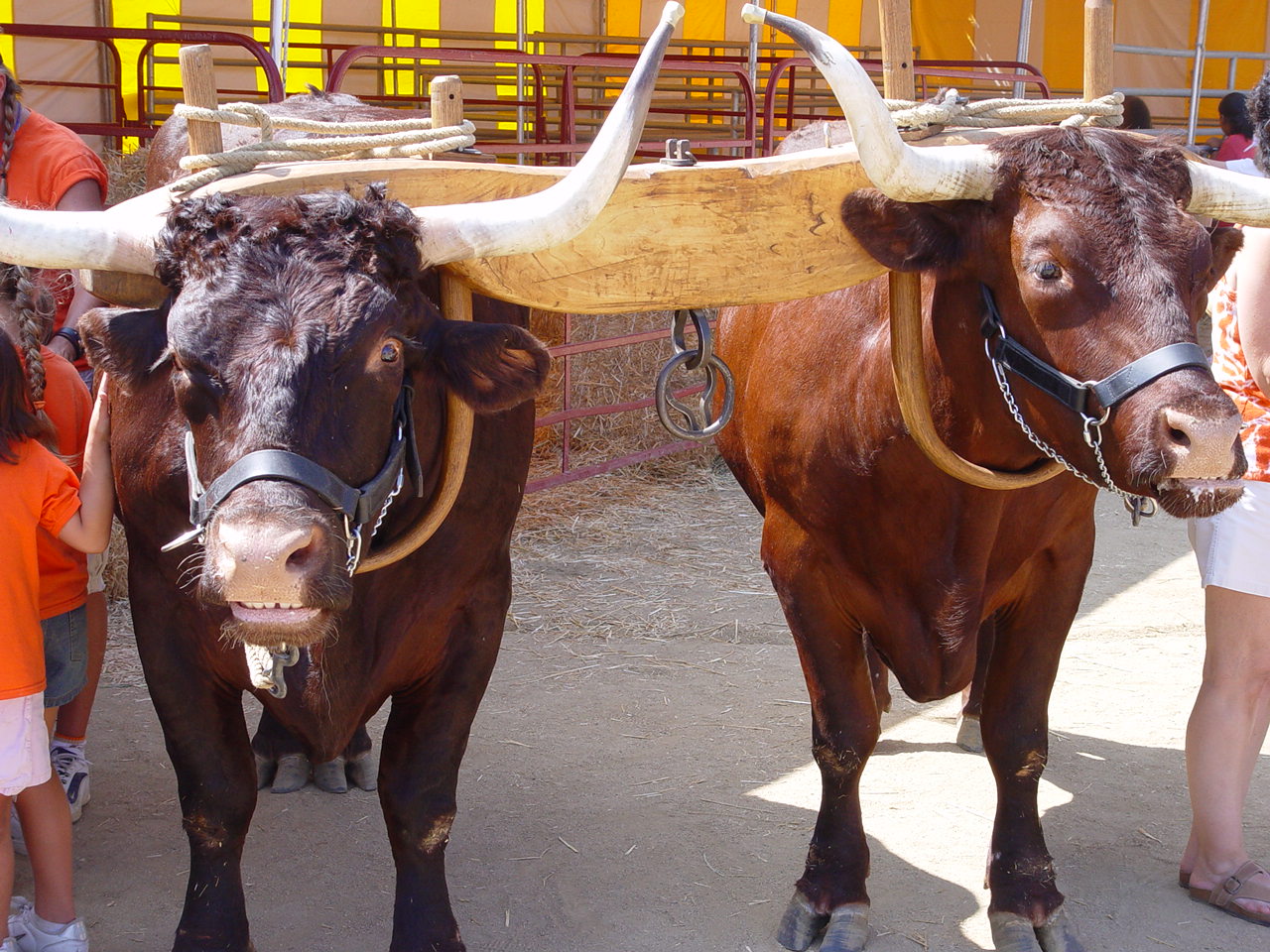
Yes... If you press the horns they indeed honk!


Jan Mongell at the fair....

Lot's of creativity going on here
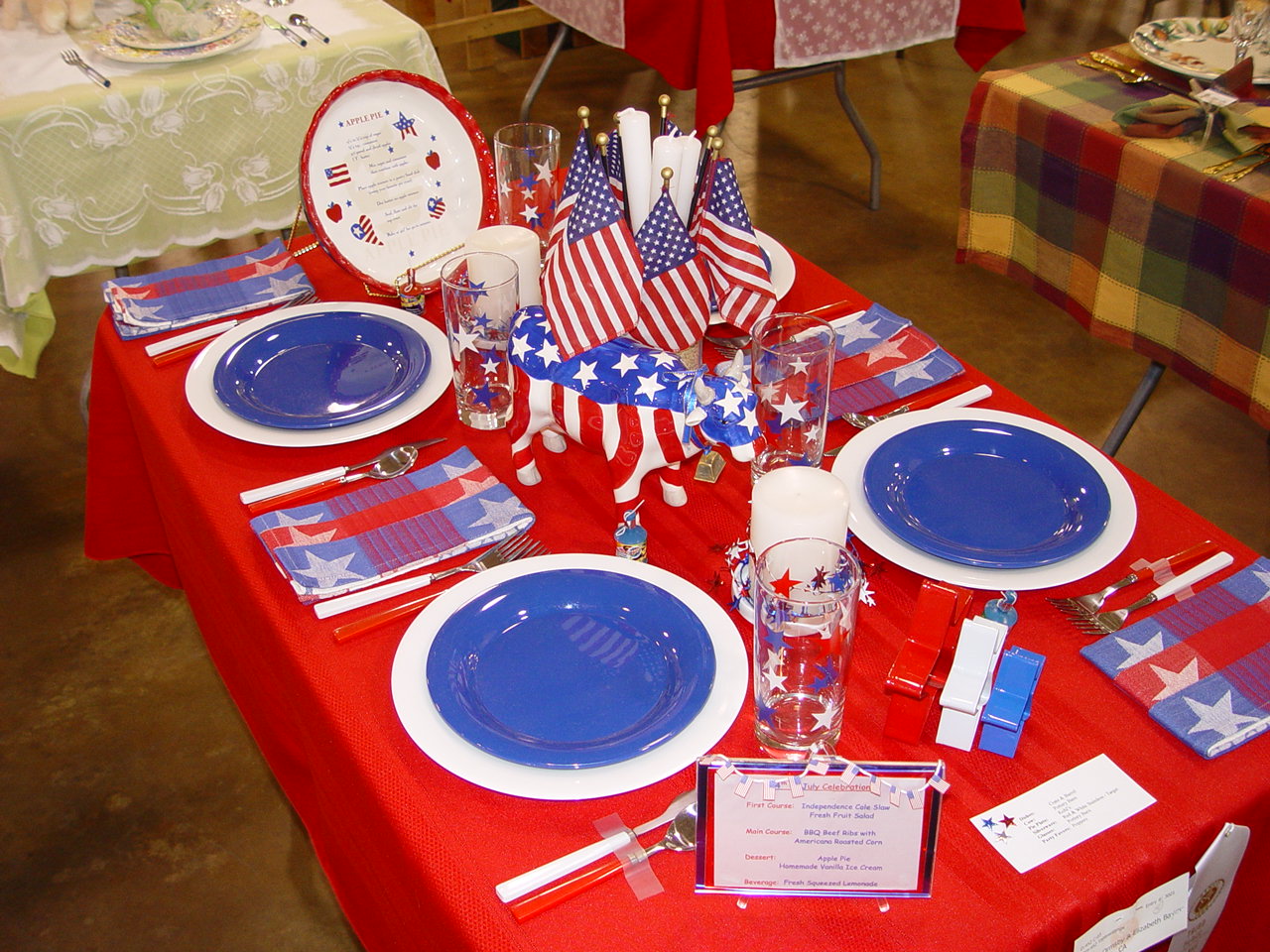
Yeah Red White and Blue
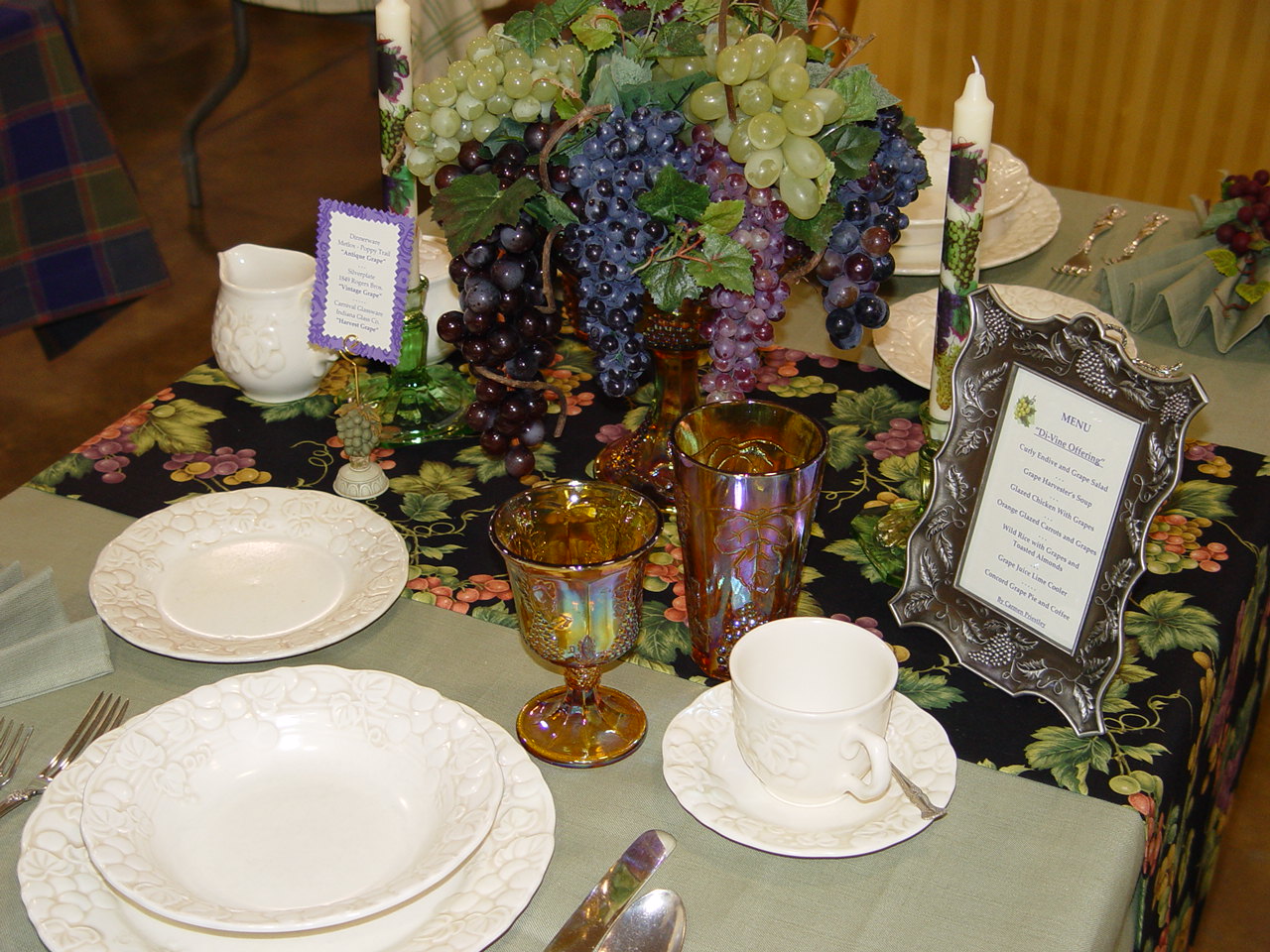
Skip the food, let's drink
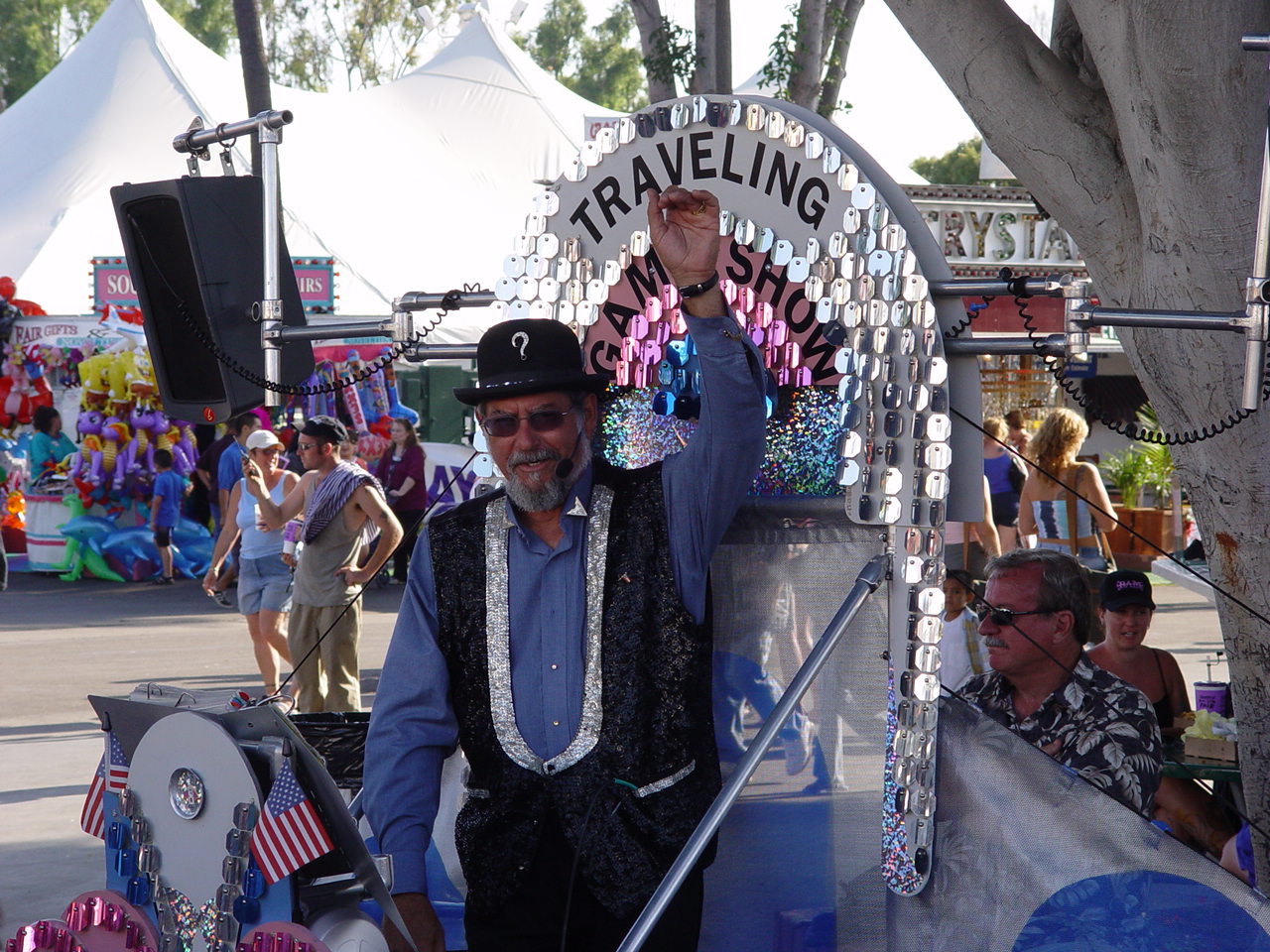
The fair has everything

The skyway gets a super view of the fair
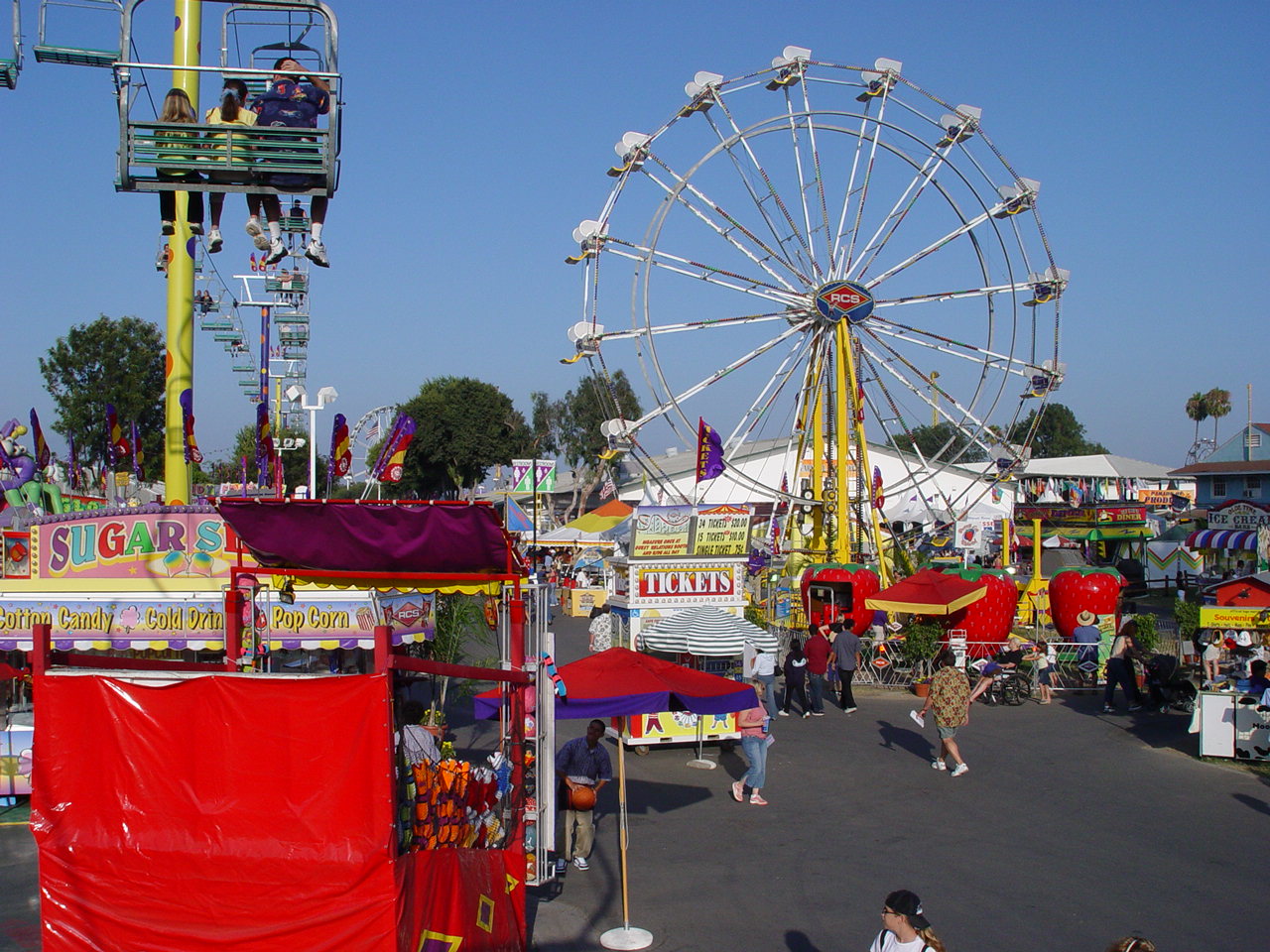
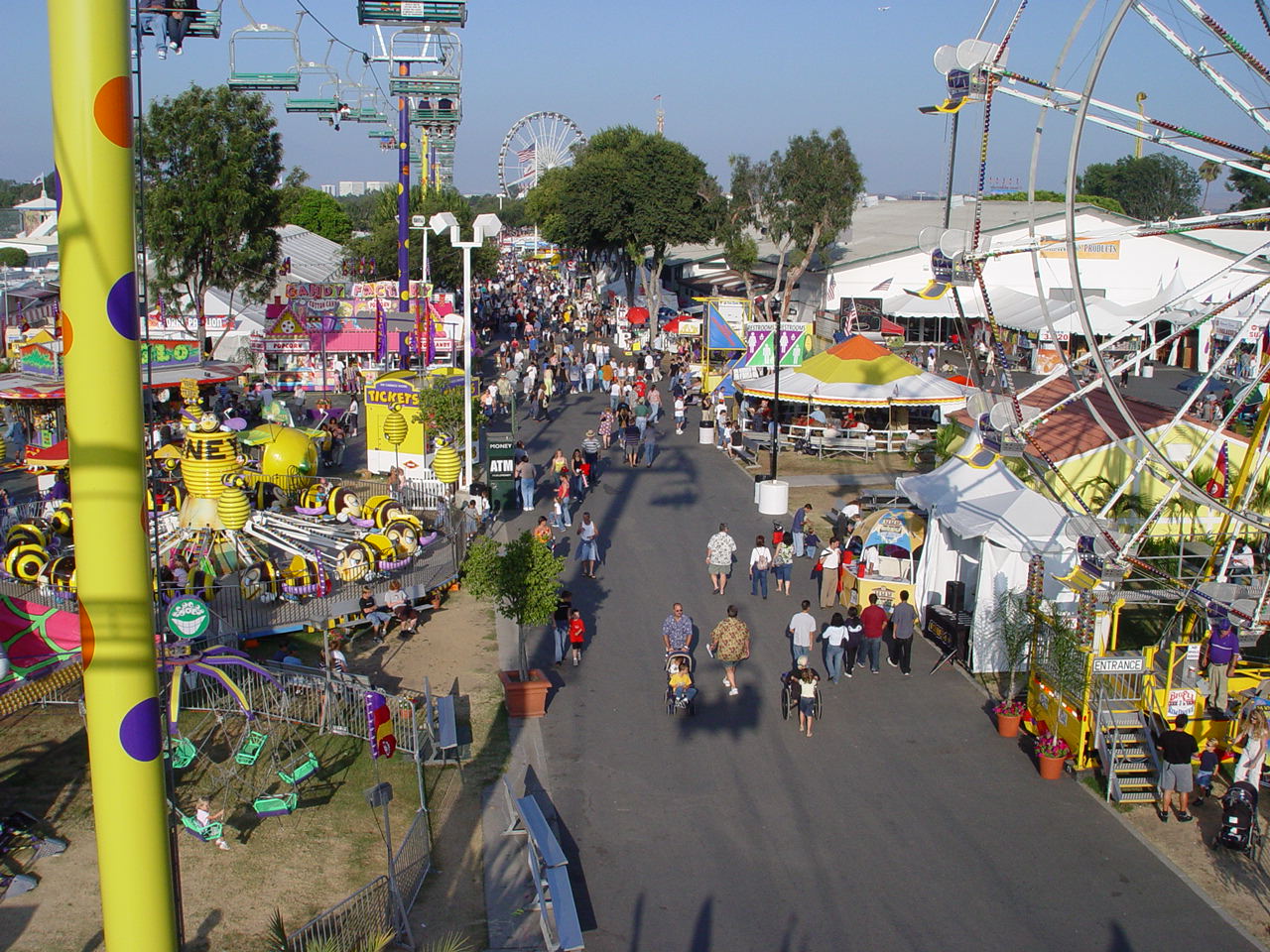
People are beginning to show up
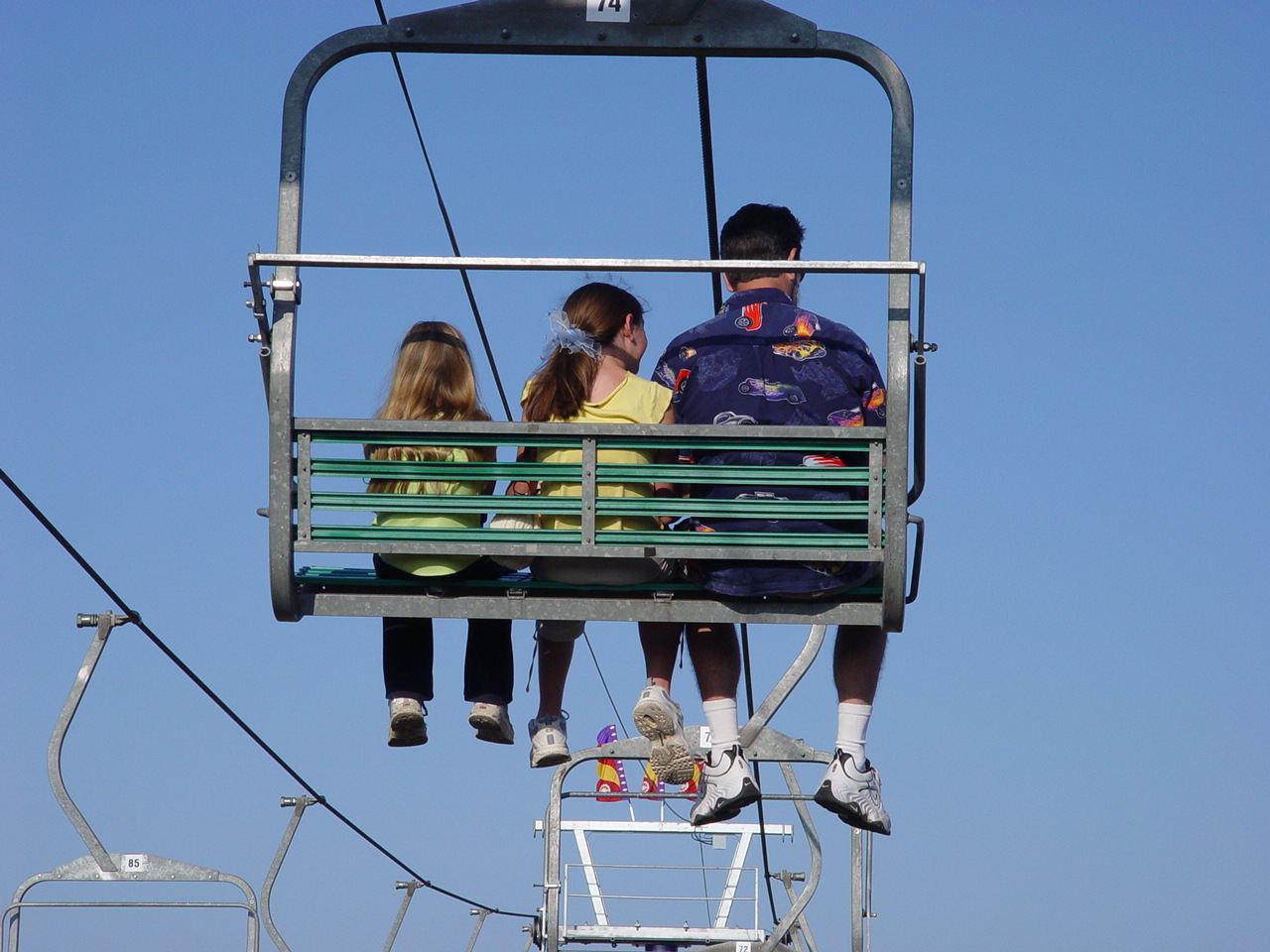
Pat and the ladies

Only a few more minutes
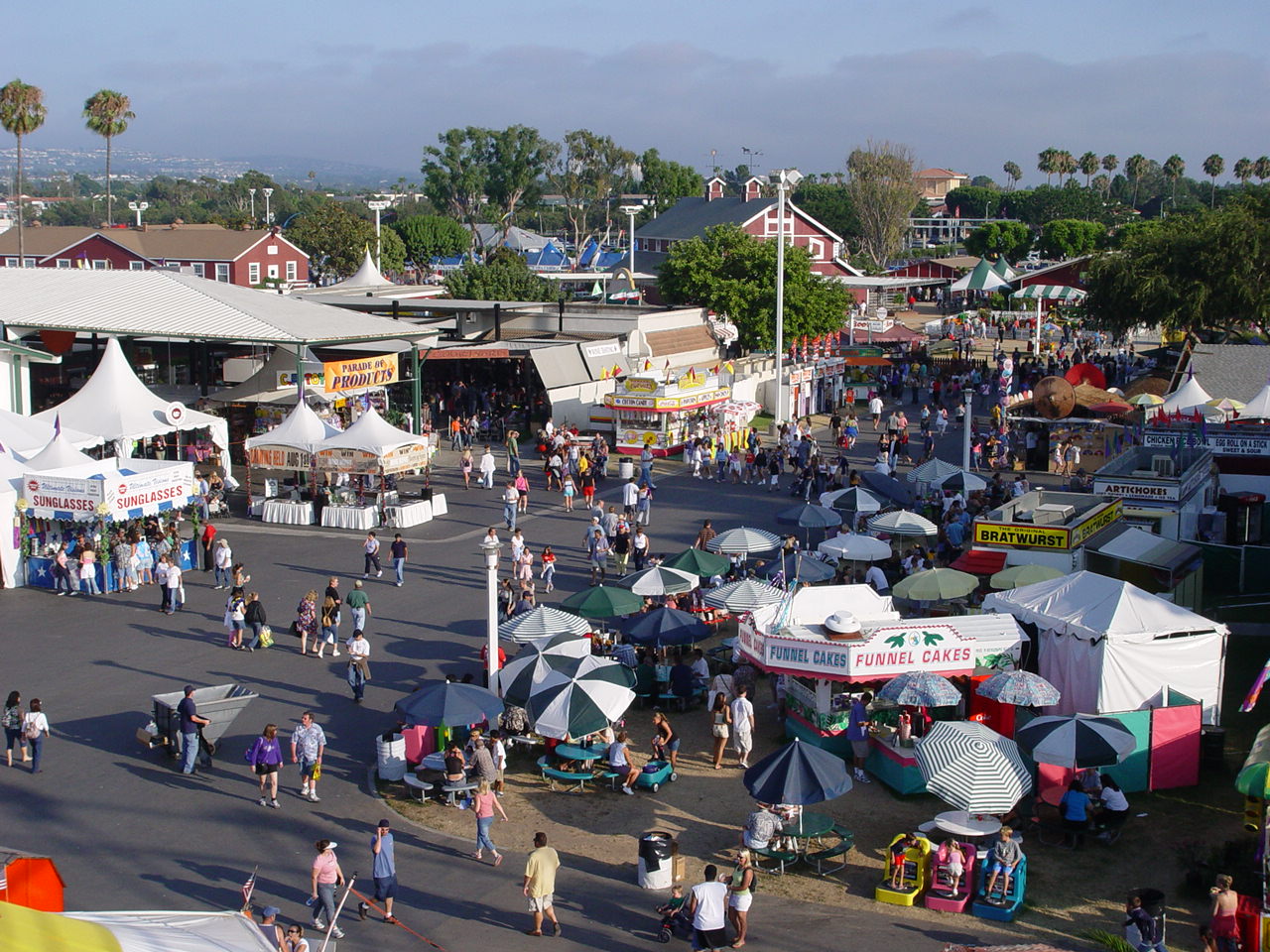
Food is everywhere
Did You Know? - Fayre is an archaic spelling of fair, used mostly from the 15th to the 17th century. This spelling is now confusingly used for both fair and fare, the latter in the sense of 'food and drink'. In itself, the word means a gathering of stalls and amusements for public entertainment. The alternate spelling is an old-fashioned affectation and is used in order to remind revellers and participants of medieval fayres and markets. It is mainly used for fairs that are essentially leisure rather than business events like trade fairs and rides.
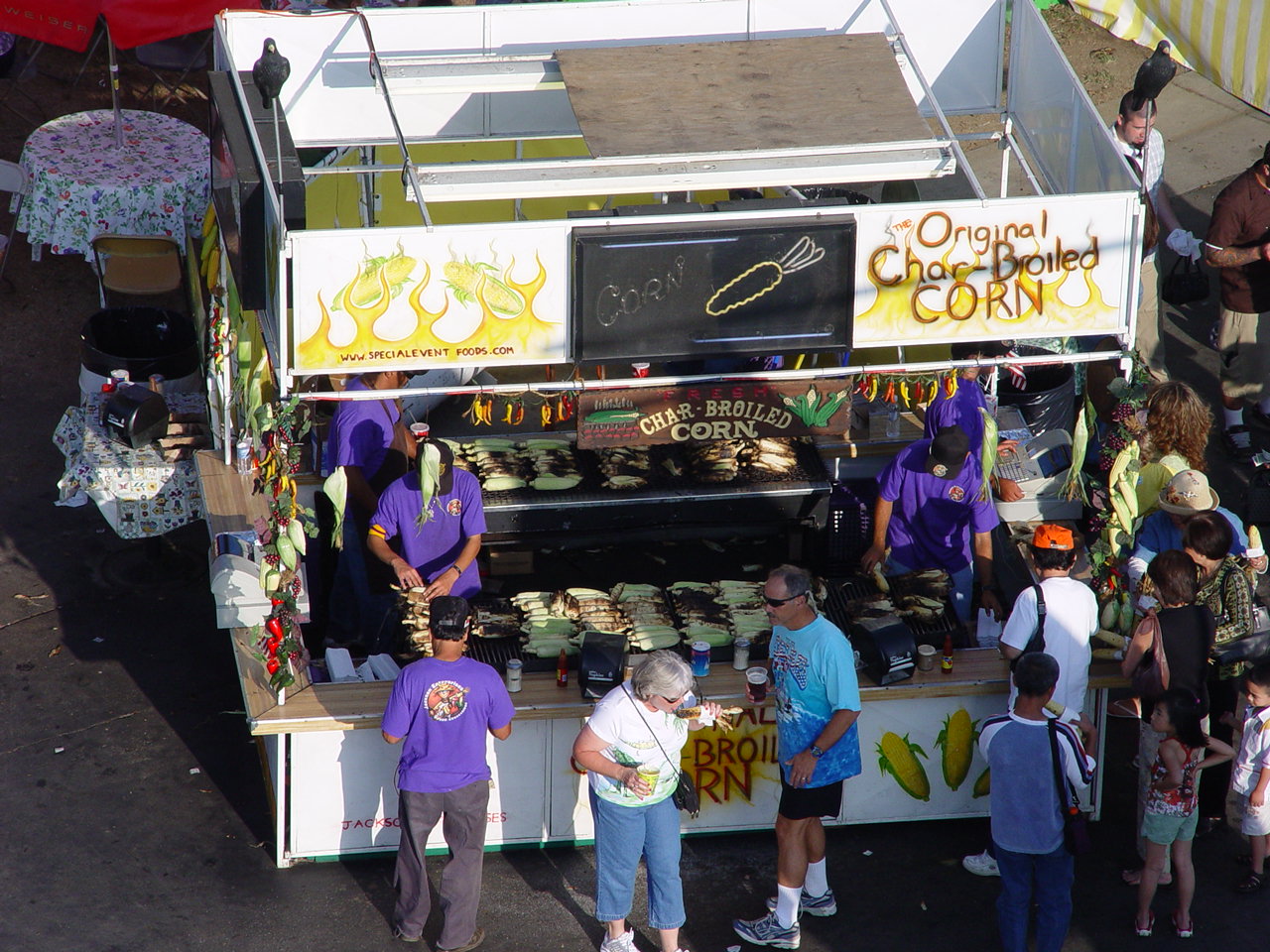
The corn looks great
Did You Know? - Corn on the cob (known regionally as "pole corn", "cornstick", "sweet pole", "butter-pop" or "long maize") is a culinary term used for a cooked ear of freshly picked maize from a cultivar of sweet corn. Sweet corn is the only variety of maize eaten directly off the cob. The ear is picked while the endosperm is in the "milk stage" so that the kernels are still tender. Ears of corn are steamed or boiled, usually without their green husks, or roasted with them. The husk leaves are in any case removed before serving.
Corn on the cob is normally eaten while still warm. It is boiled or grilled. It is then often seasoned with salt and buttered before serving. Some diners use specialized skewers, thrust into the ends of the cob, to hold the ear while eating without touching the hot and sticky kernels.

The Ferris wheel can be seen for miles

The highest point on the grounds
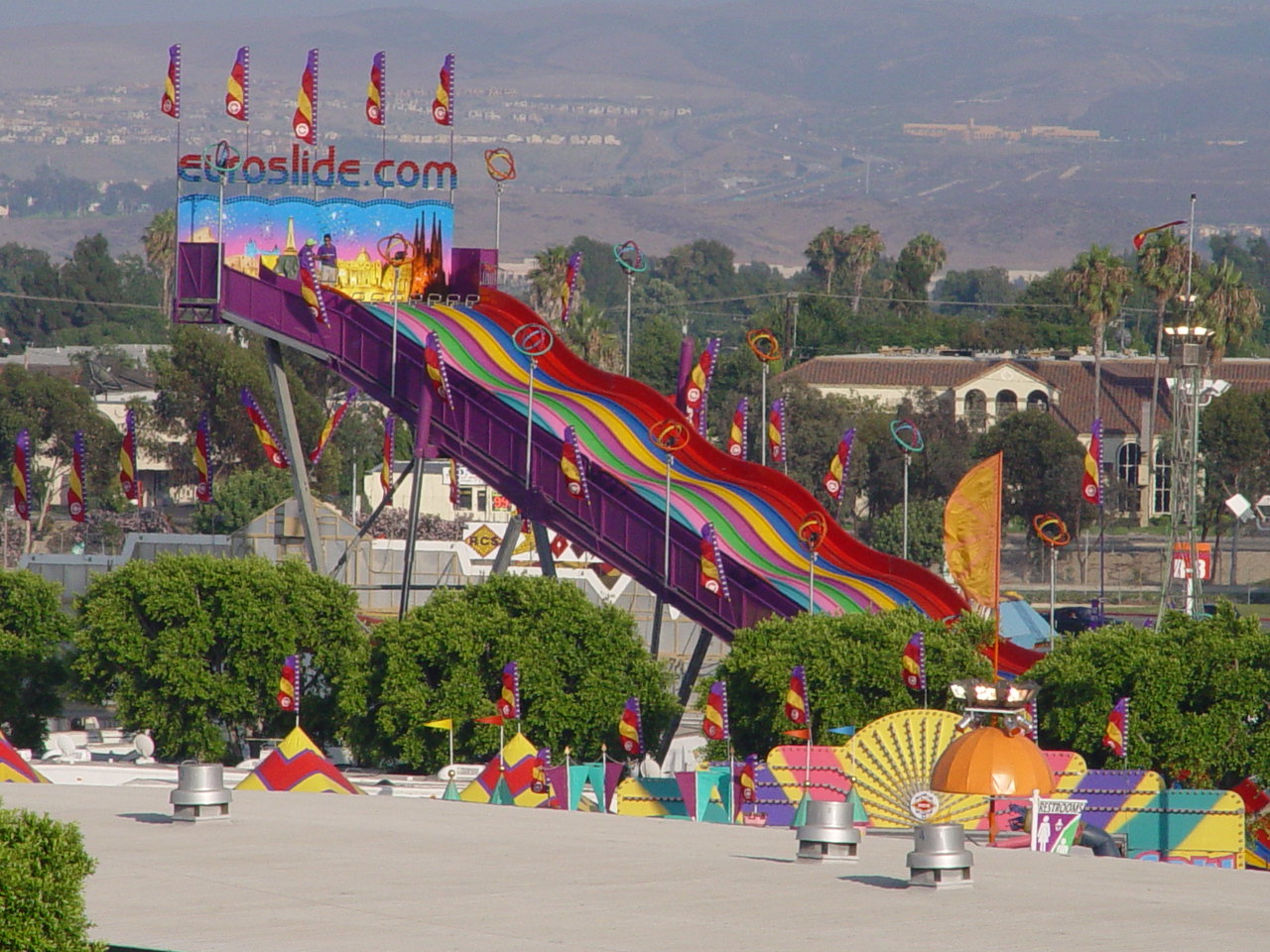
The slide looks smaller from here
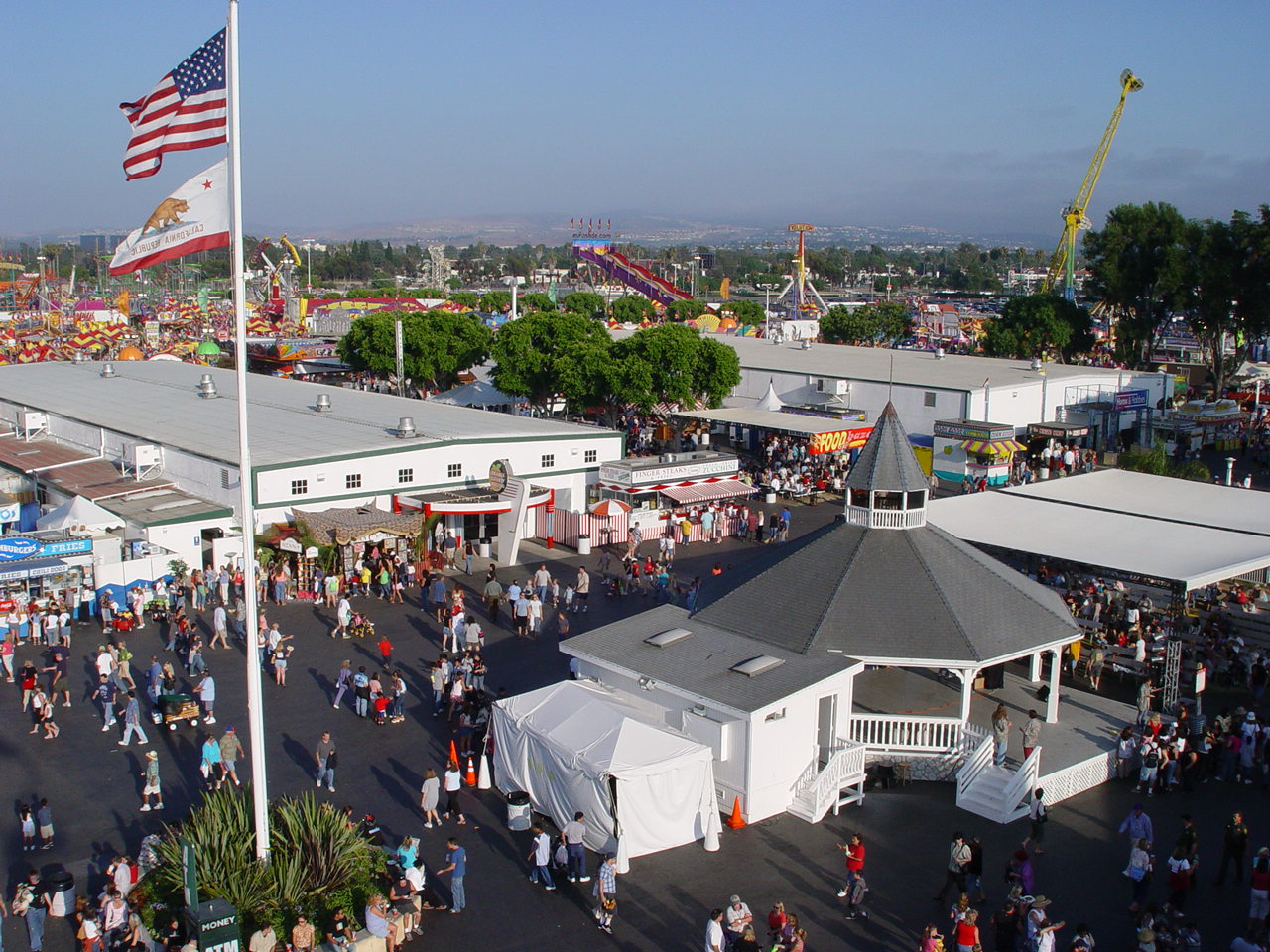
The center point of the fair

What a beautiful flag

The rides are very busy


Guys playing the trash cans and water containers.... Nice sound

Directions are needed the fair is so big

Coming down
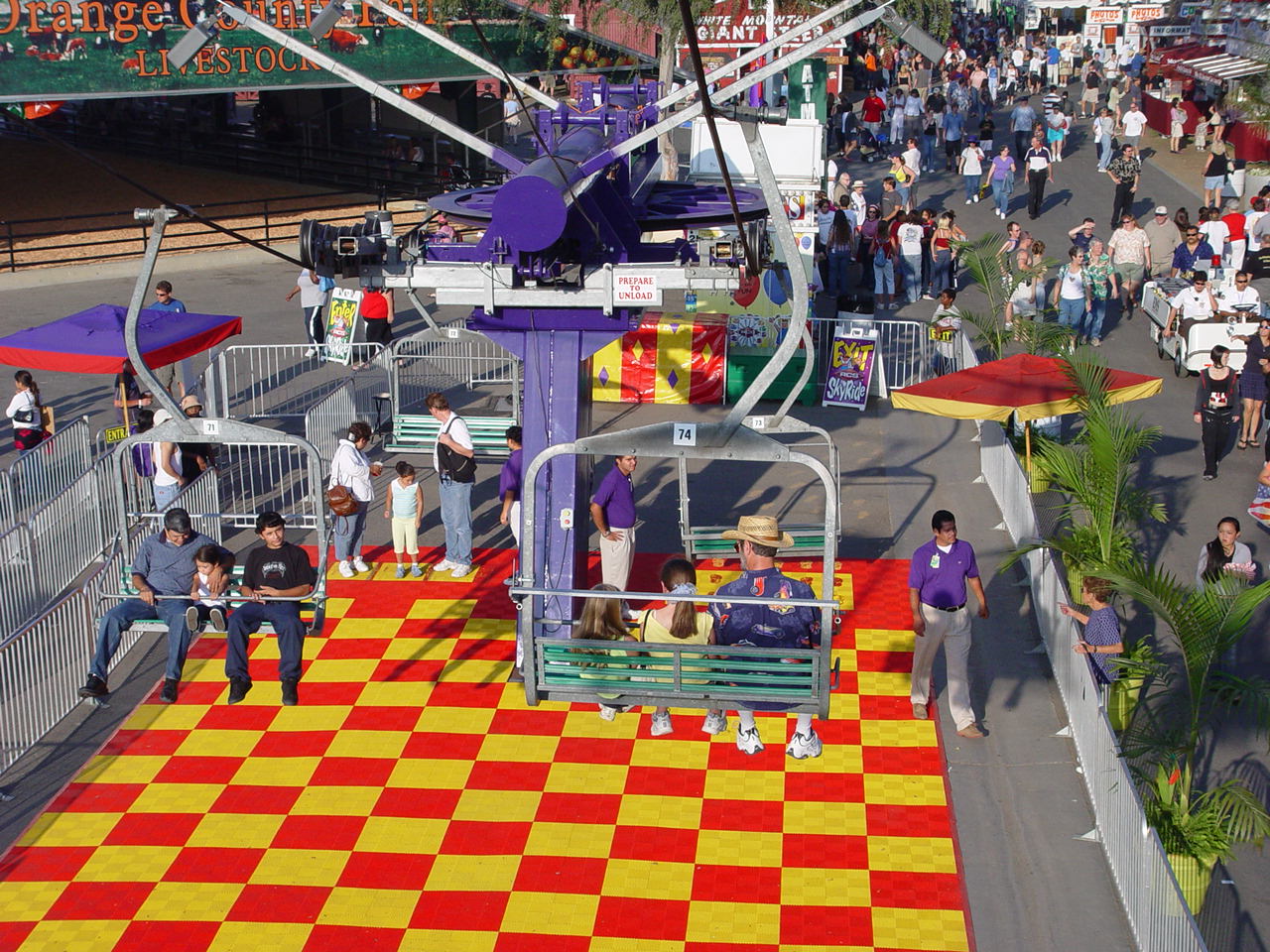
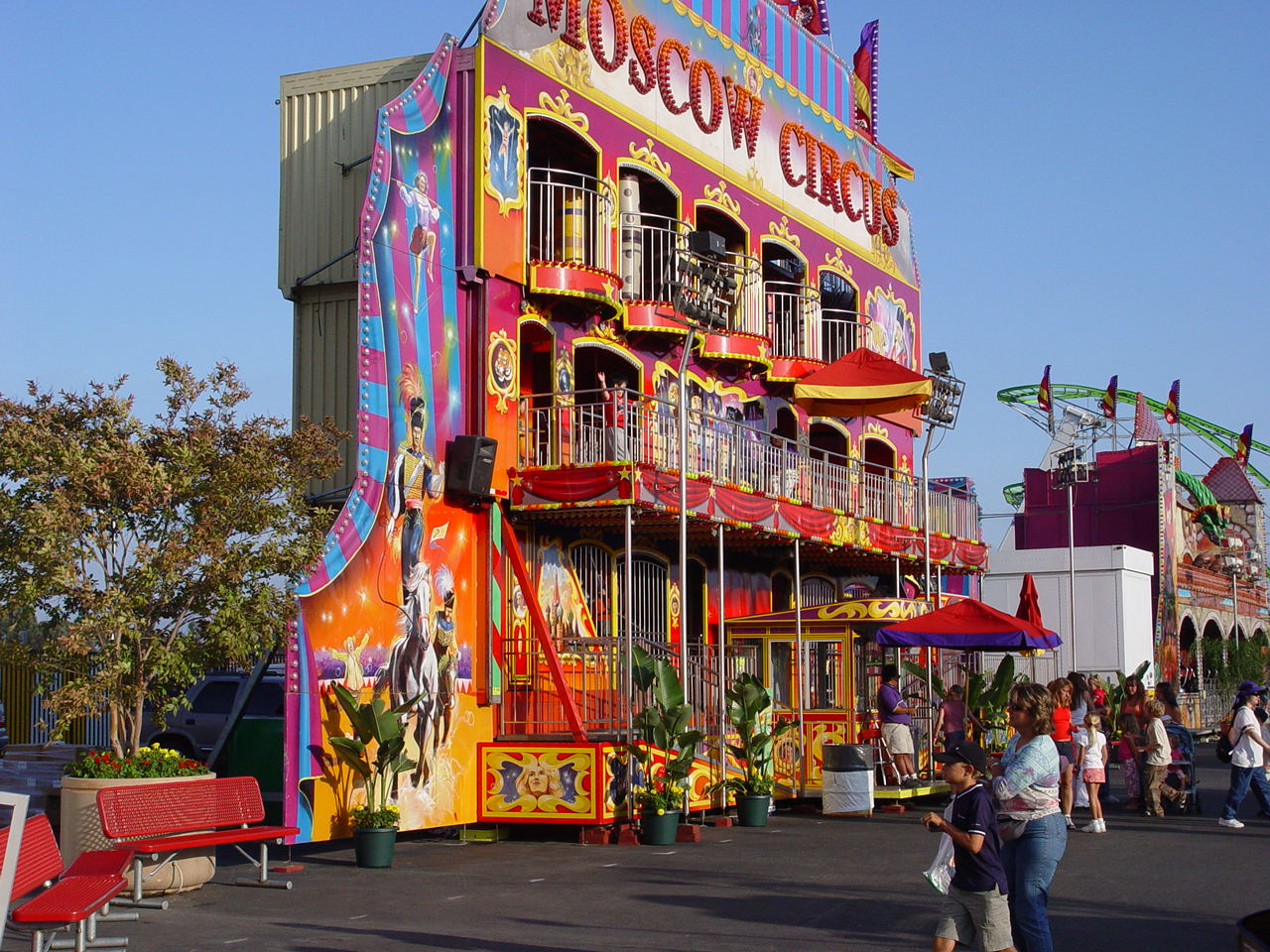
The rides are amazing... They come in eighteen-wheelers and are set up quickly
Ferris Wheel
Did You Know? - Did You Know? - The Ferris wheel is named after George Washington Gale Ferris, Jr., who designed a 264 foot (80 meter) wheel for the World's Columbian Exposition in Chicago, Illinois in 1893. It was designed as a rival to the Eiffel Tower, the centerpiece of the 1889 Paris exhibition. This first wheel could carry 2,160 persons at a time; The Ferris wheel was the largest attraction at the Columbian Exposition standing over 250' tall and powered by two 1000 HP steam engines.
There were 36 cars each the size of a school bus that accommodated 60 people each (20 seated, 40 standing). It took 20 minutes for the wheel to make two revolutions - the first to make six stops to allow passengers to exit and enter; the 2nd a single non-stop revolution - and for that, the ticket holder paid 50 cents.
The wheel was moved twice after the 1893 Fair and was eventually destroyed (by controlled demolition) in 1904 after it was used at the St. Louis exposition of that year. At 70 tons, its axle was the largest steel forging of the time. It was 26 stories tall, only a quarter of the Eiffel Tower's height.

Yikes... Looks straight up

Things have changed over the years
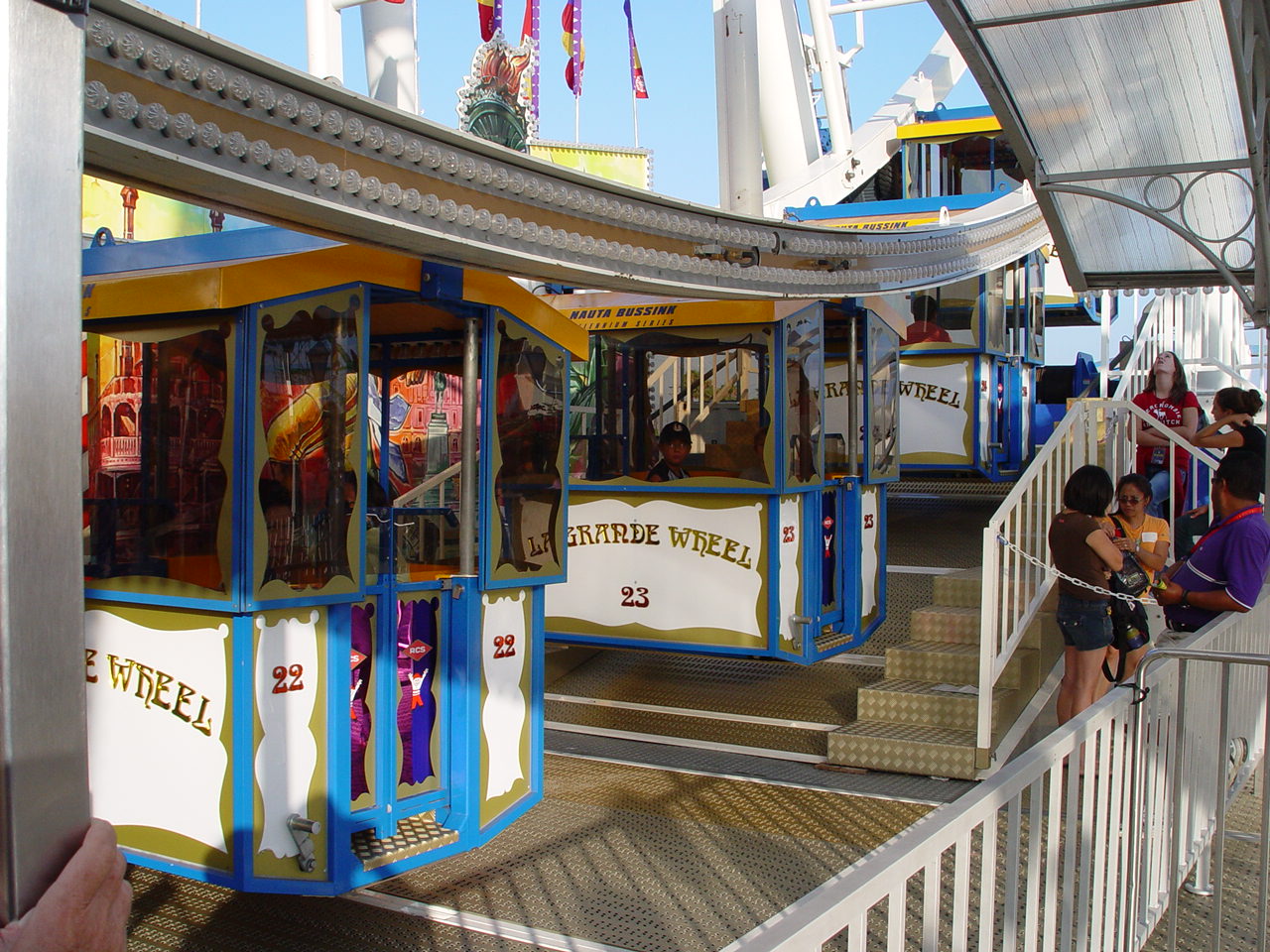
Look simple enough

This entire device gets moved with sixteen 18-wheelers
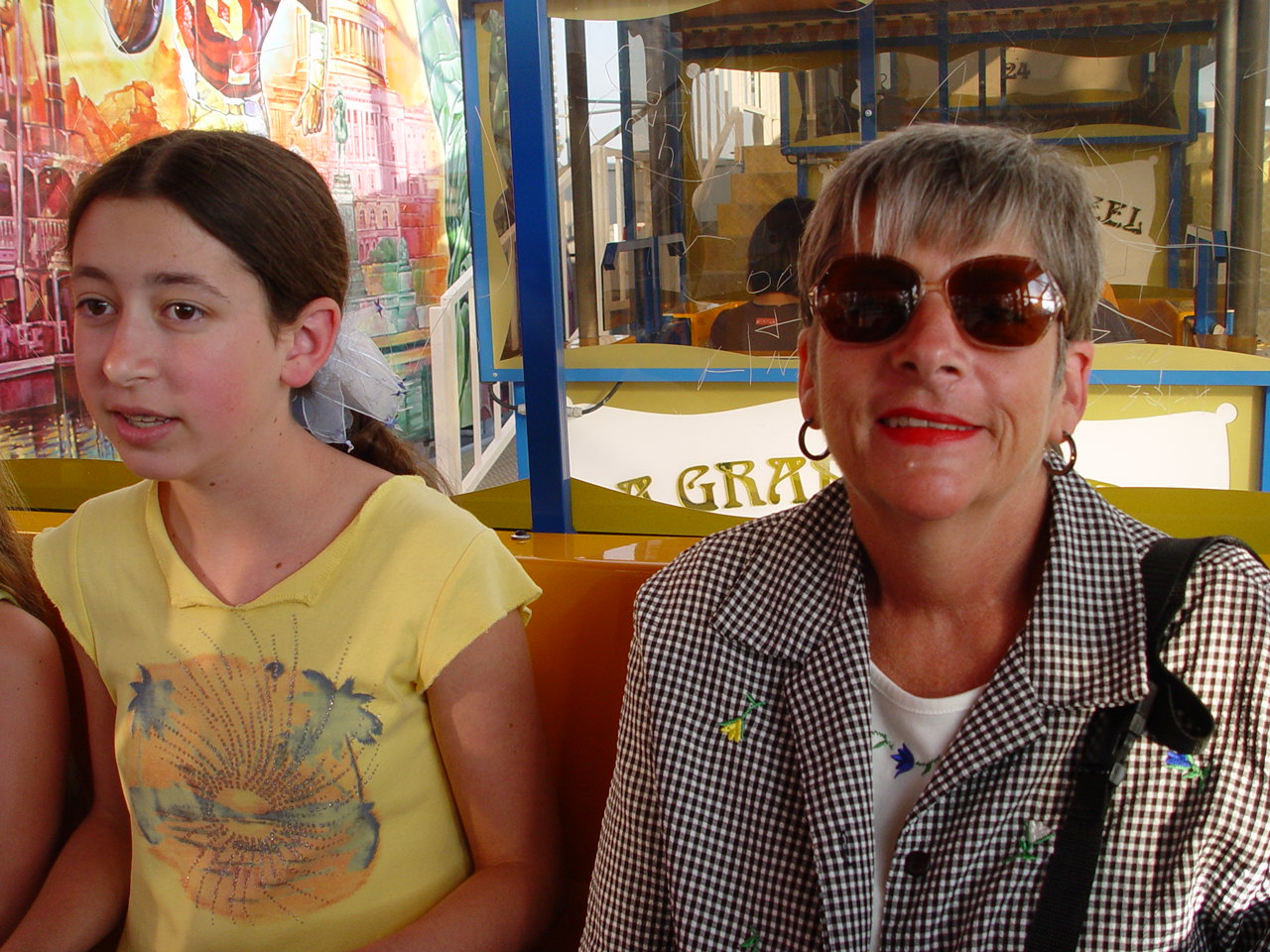
Hannah and Aunt Sue are heading for the sky

They look like ants down there... ants? or Aunts?

The smoke from the food
floats over the ride area

She is happy...
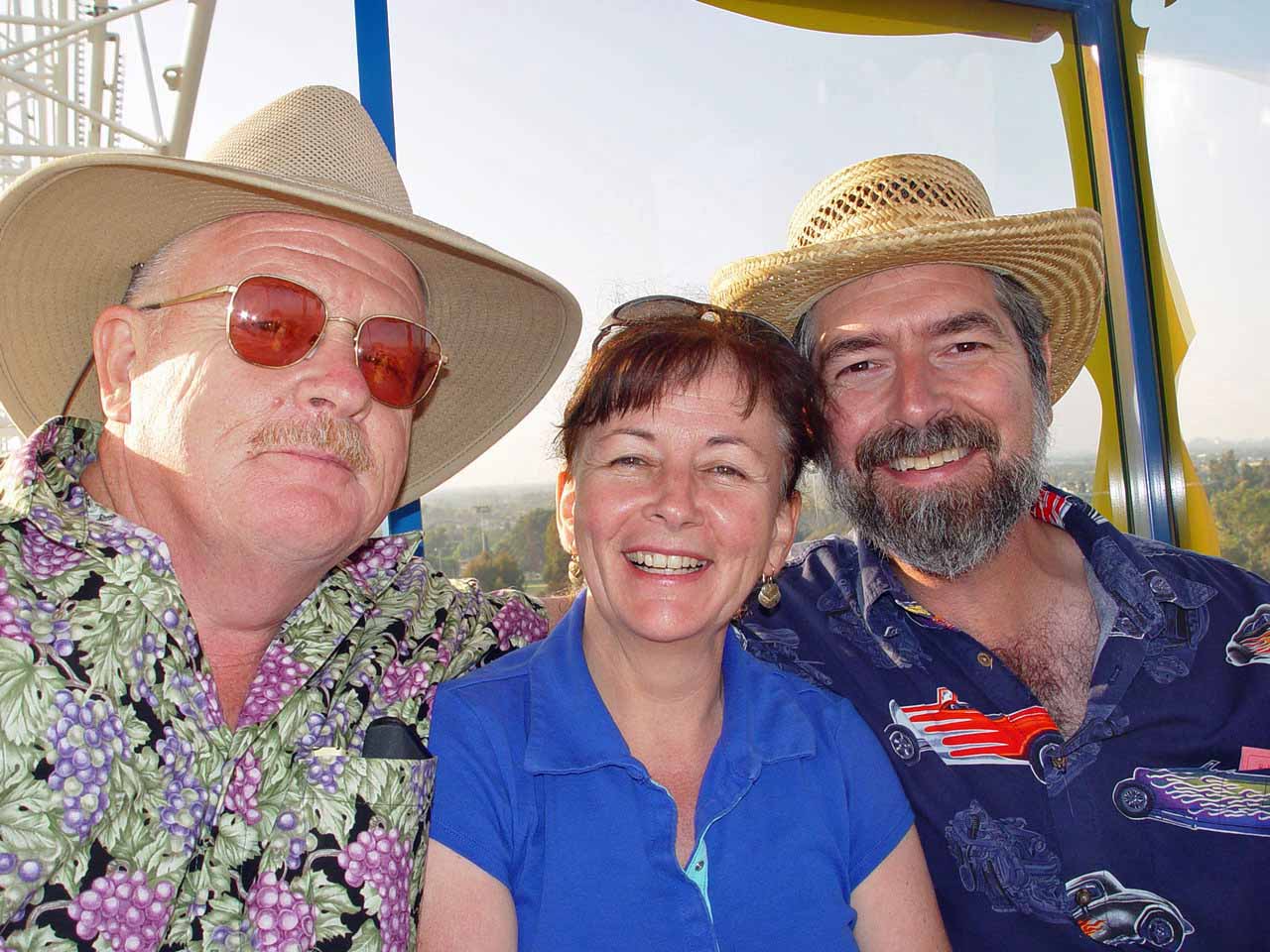
They look terrified
Bungee Time
Did You Know? - Bungee jumping (or bungy jumping) is the sport of jumping from a tall structure while connected to a large rubber band. The tall structure is usually a fixed object, such as a building, bridge, or crane; but it is also possible to jump from a movable object, such as a hot-air-balloon or a helicopter, that has the ability to hover over one spot on the ground; fixed-wing aircraft are clearly unsuitable because they only stay aloft when moving rapidly forward. The intense thrill comes as much from the free-falls as from the rebounds.
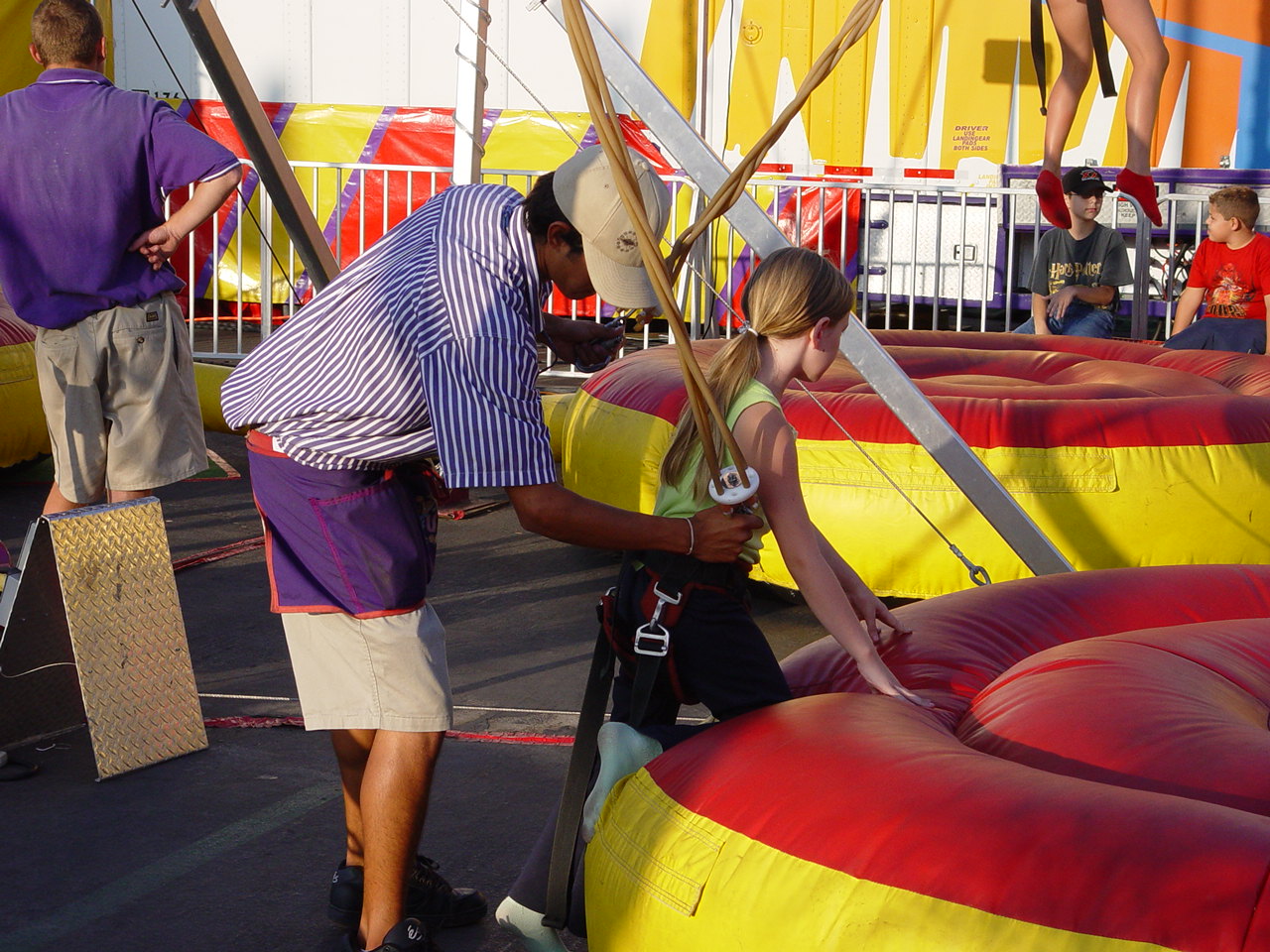
Strap her in
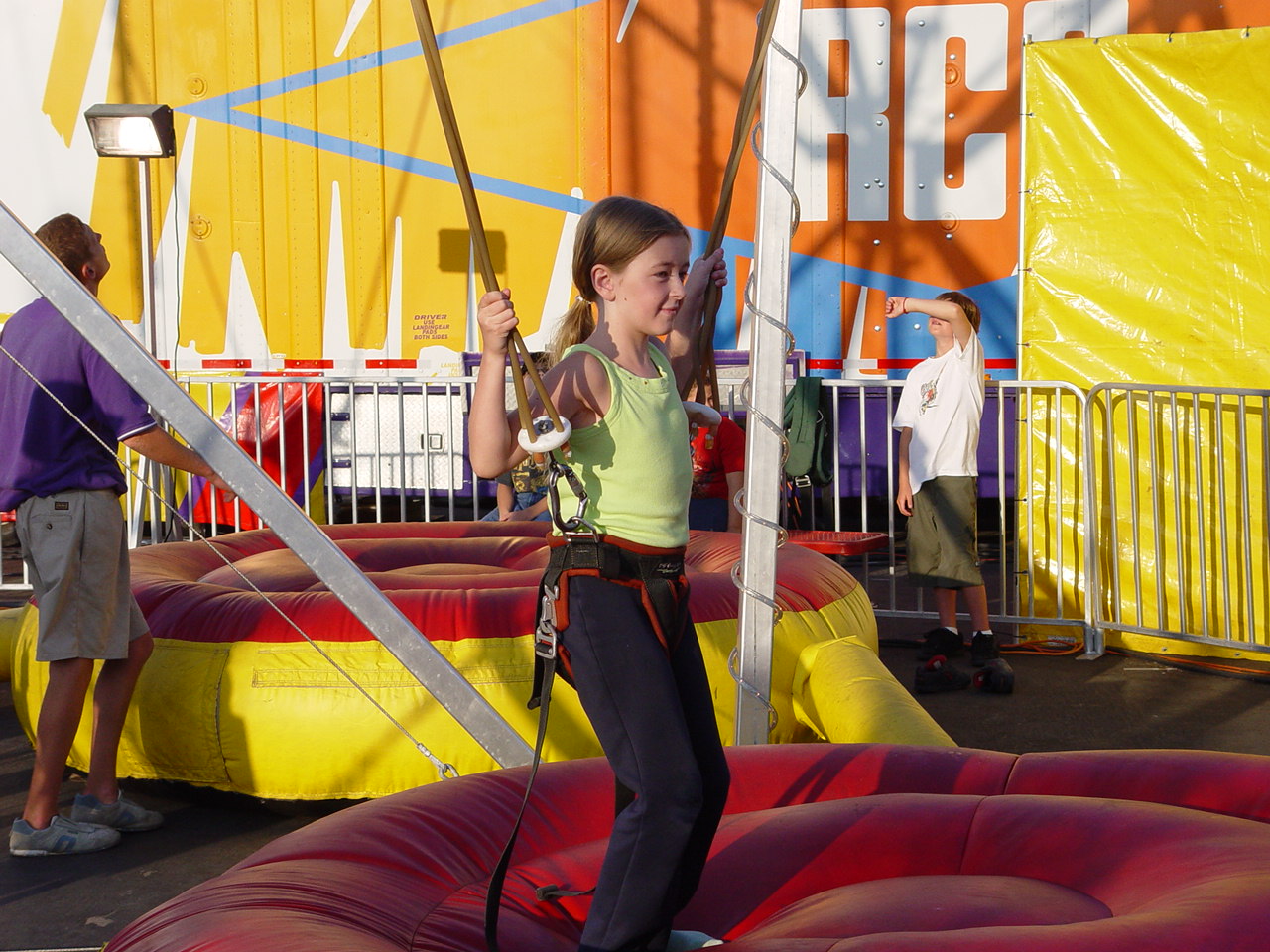
T-1 Launch
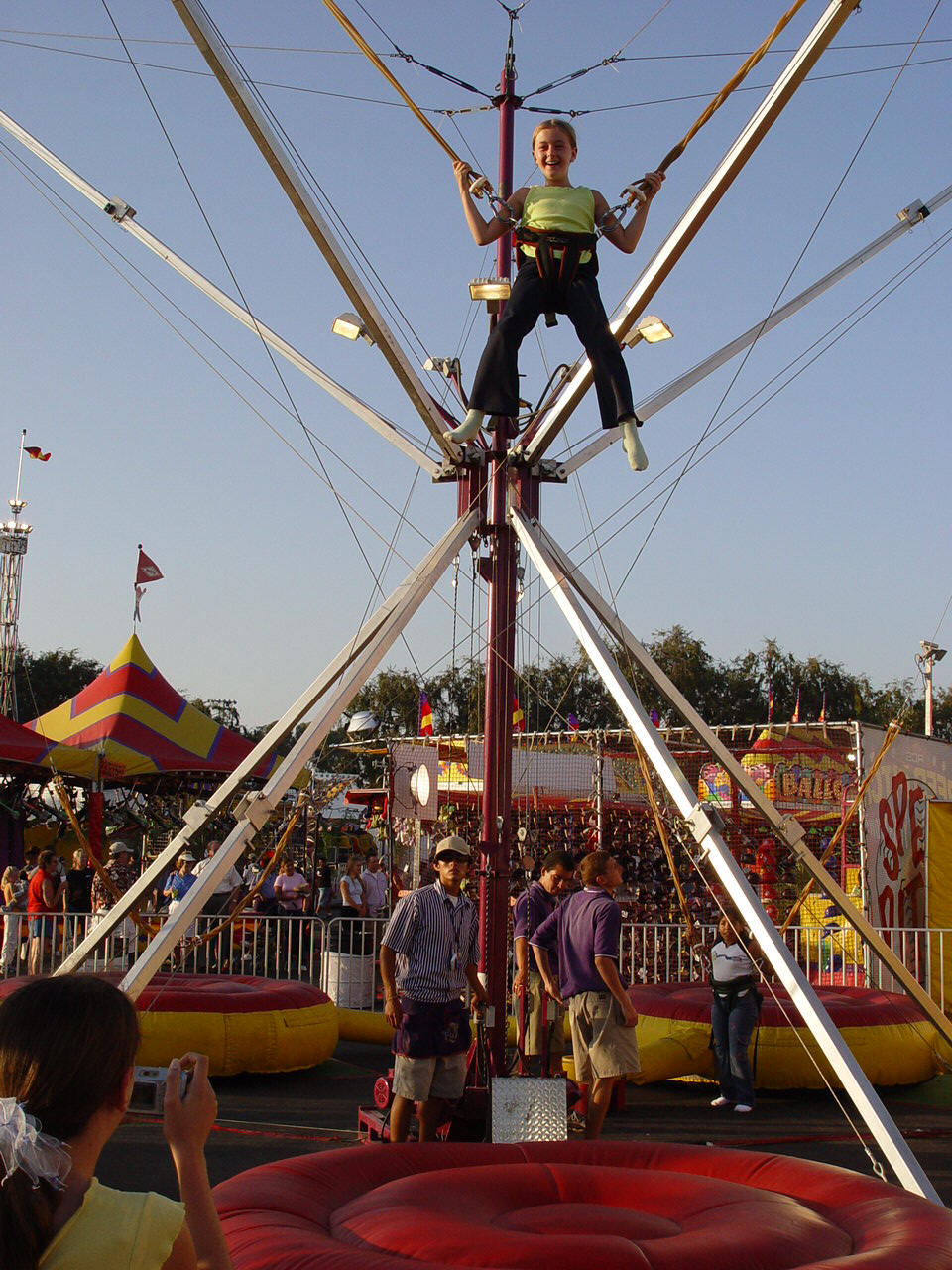
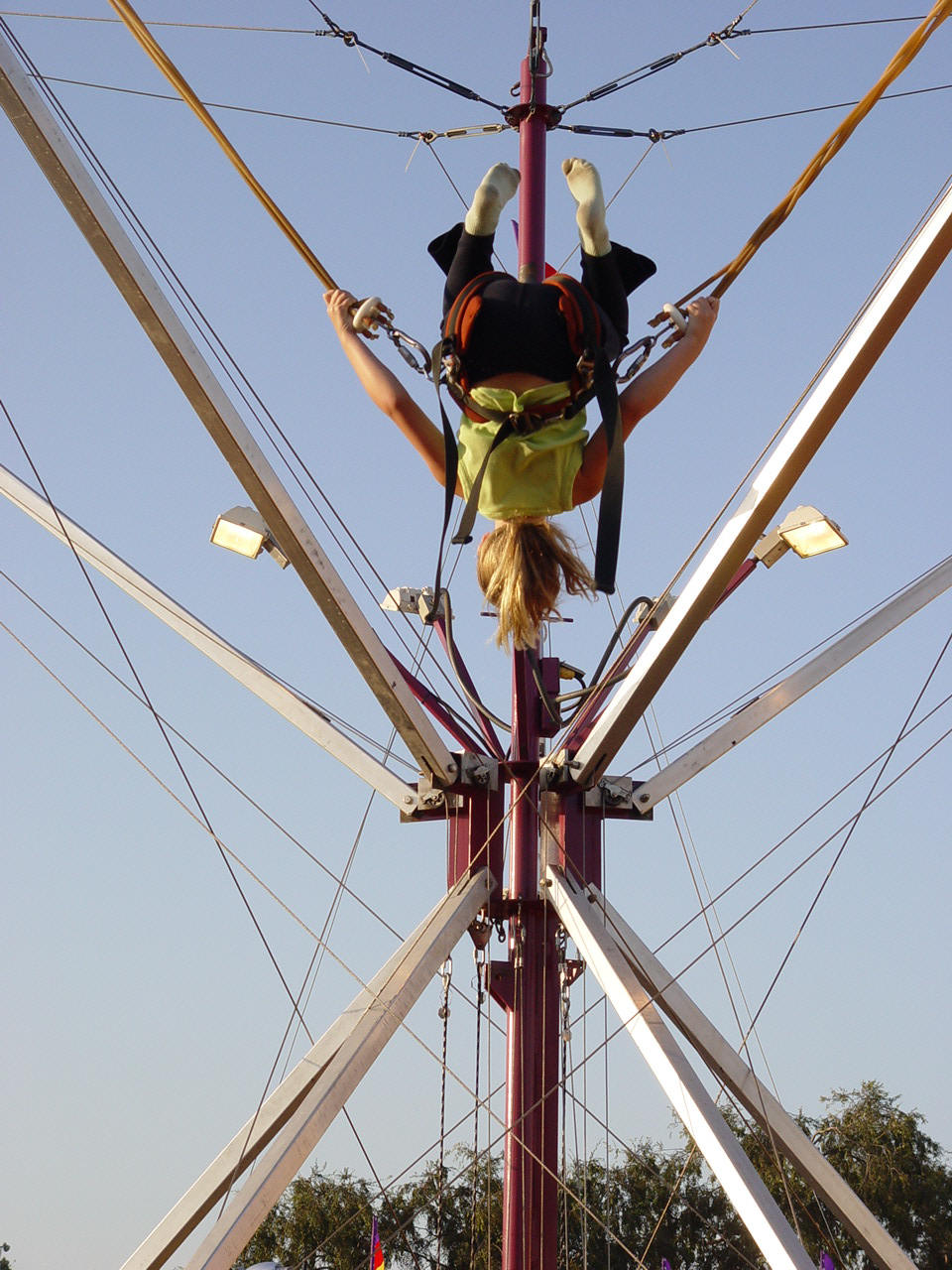

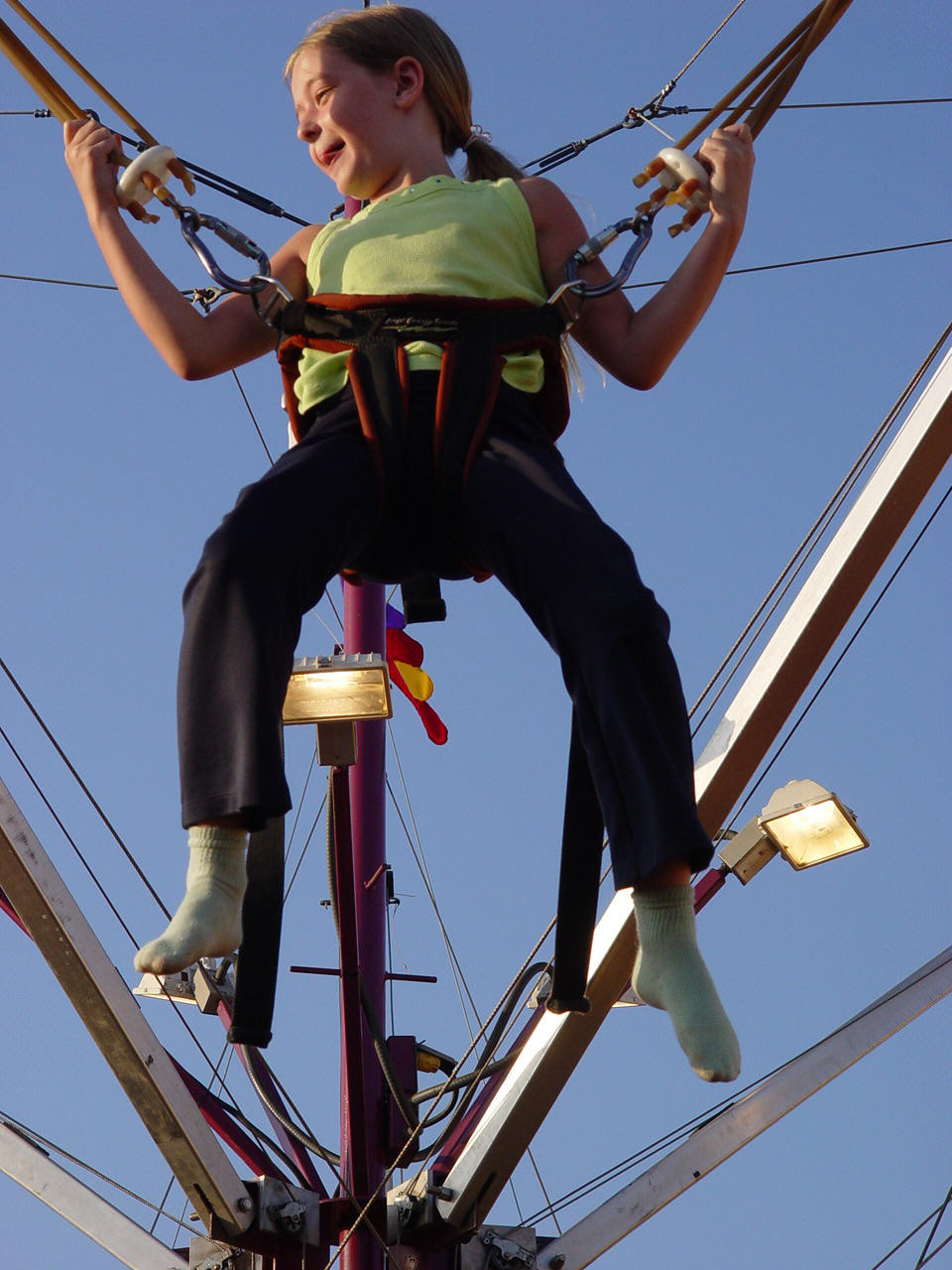
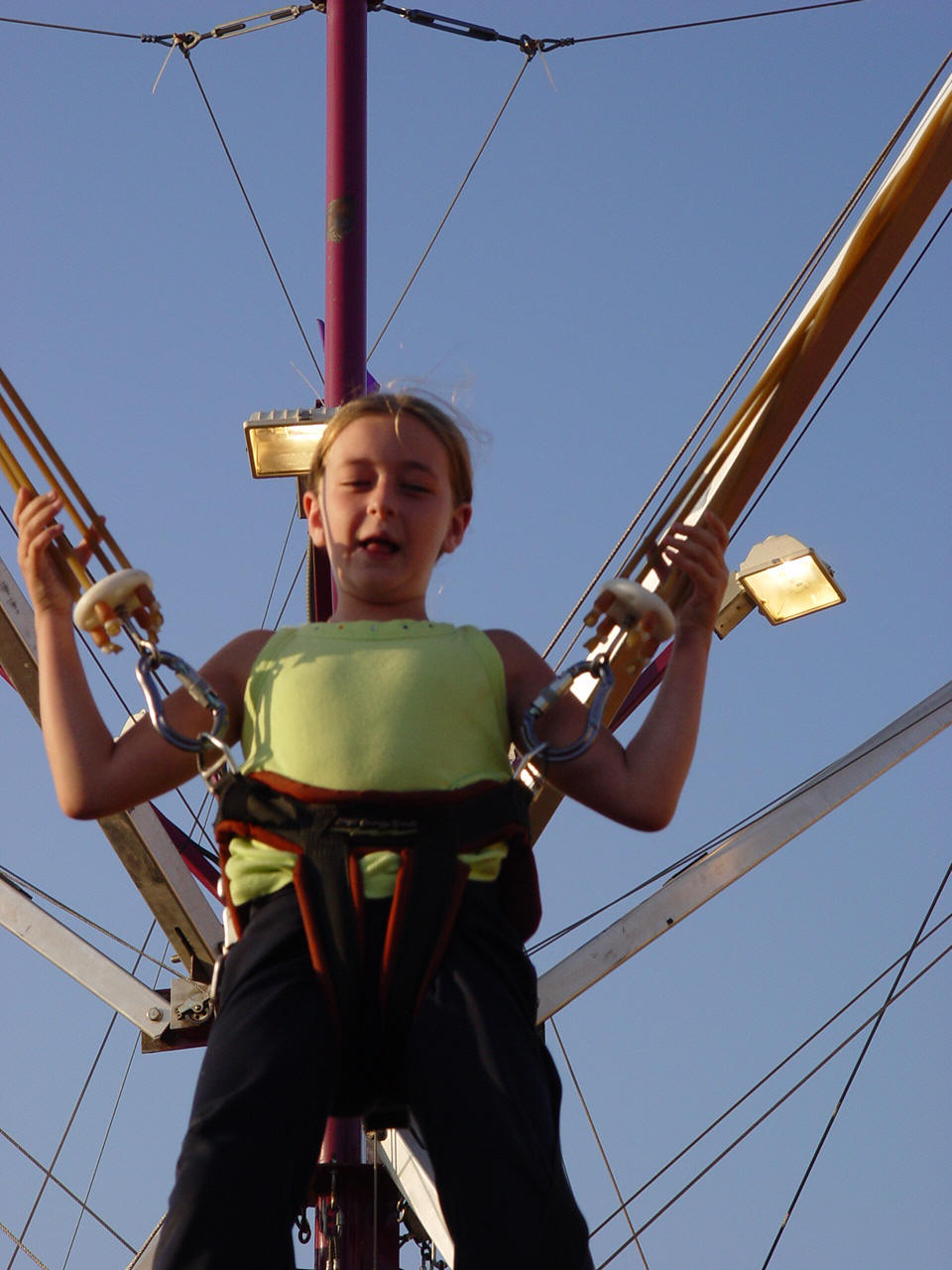
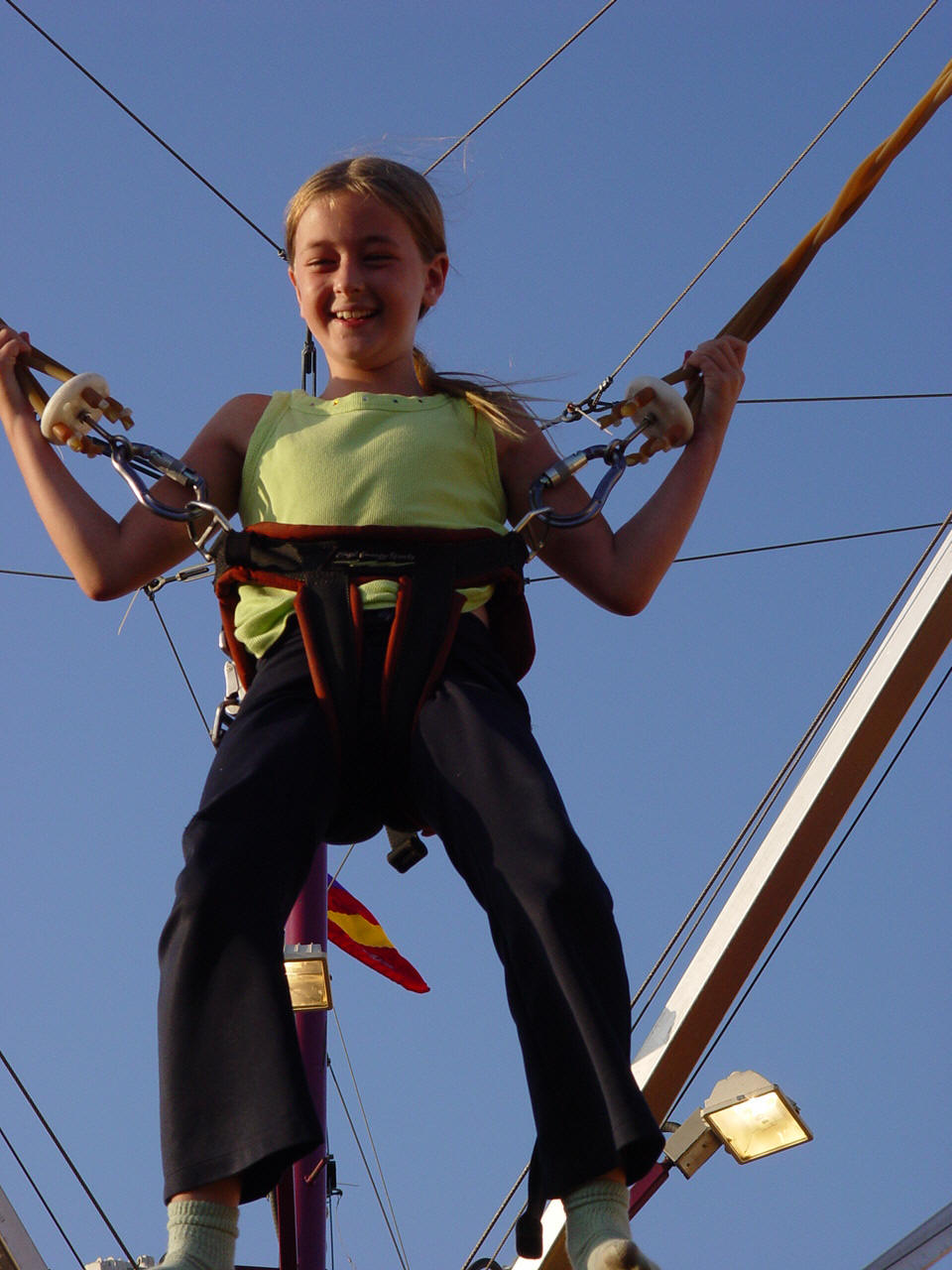
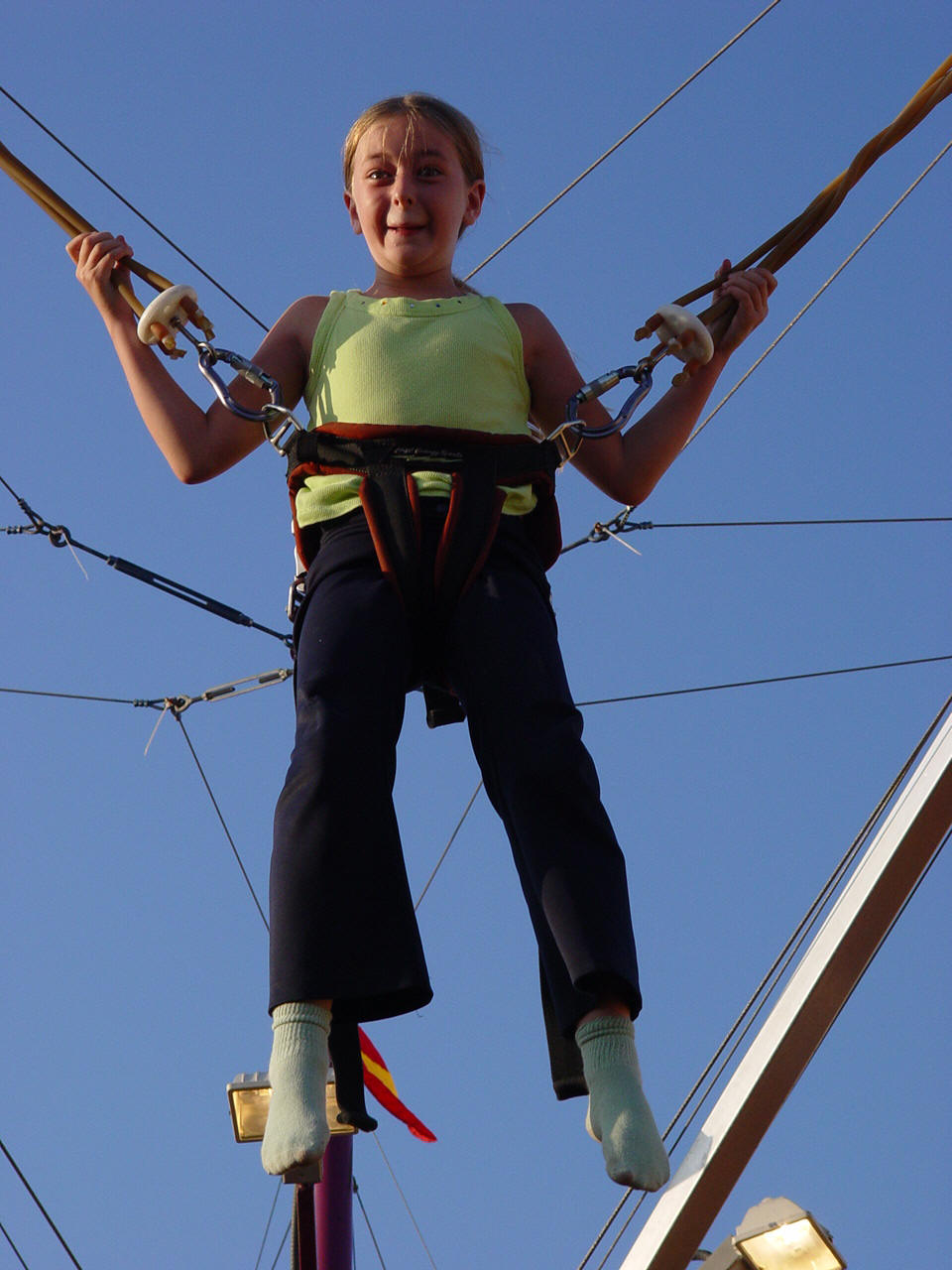
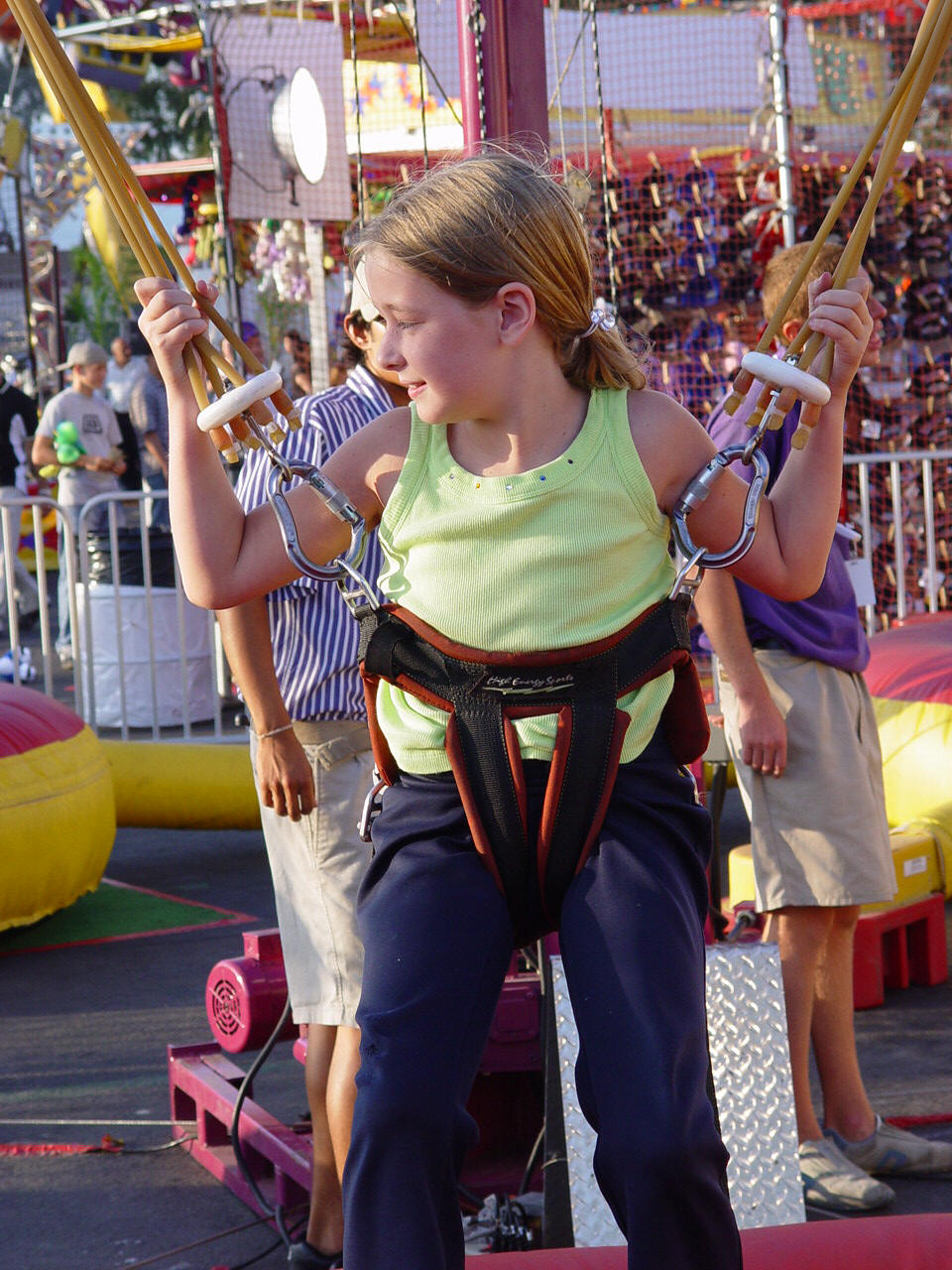

Oh dear... Time is up
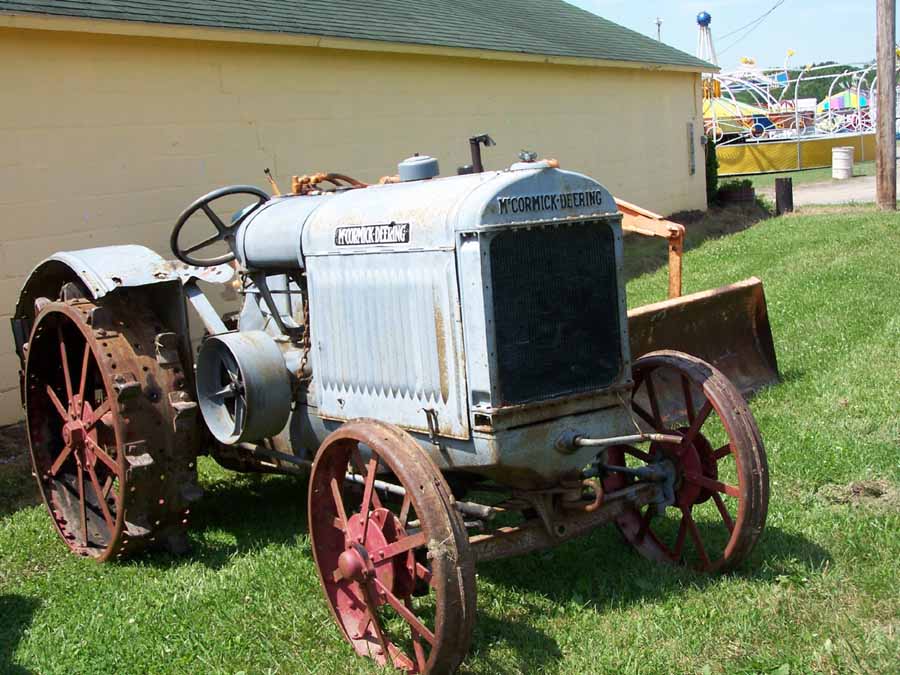
Time to drive home... Hop in!